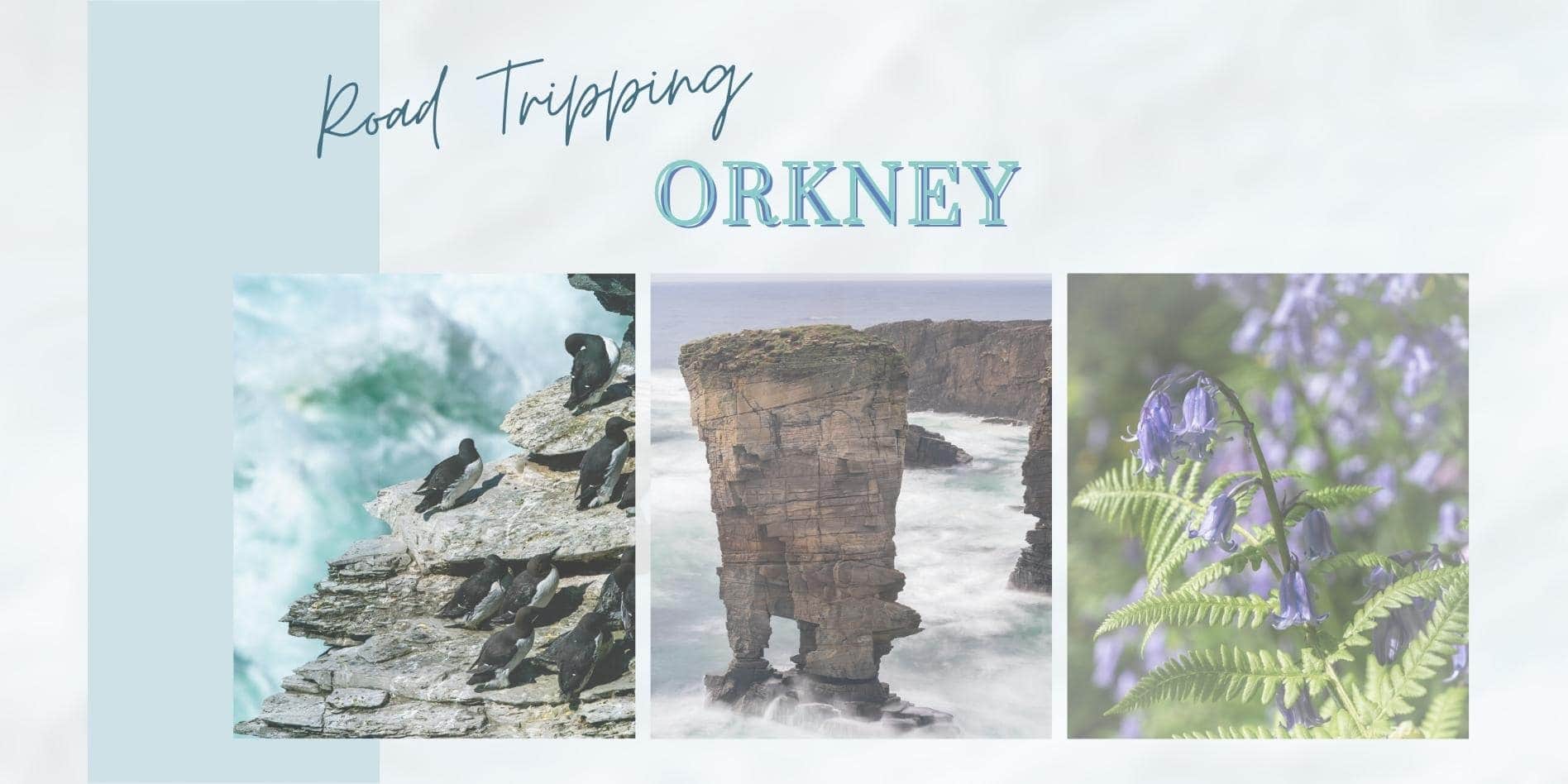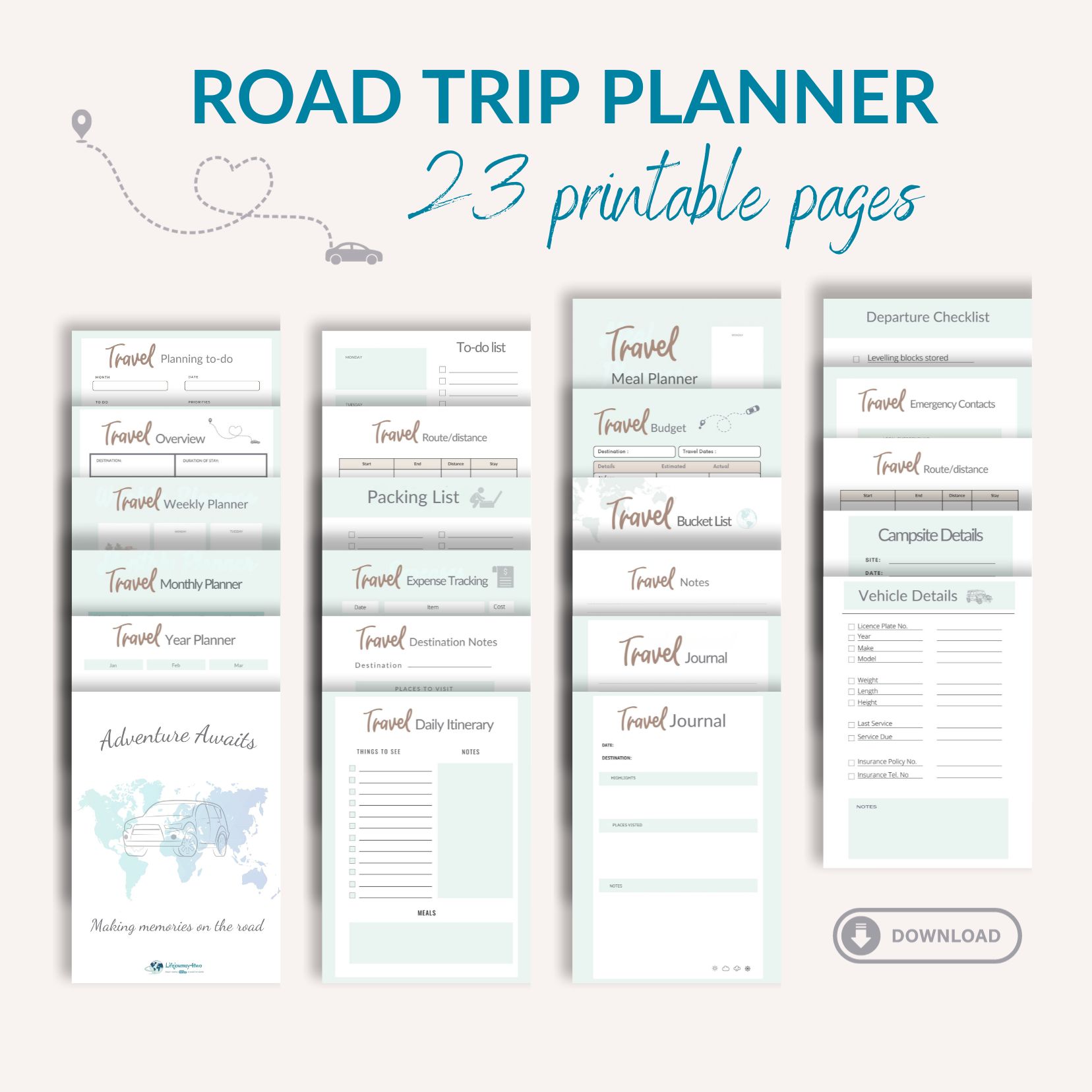Embark on an unforgettable 3-day Orkney itinerary. This guide, written from our personal experiences, blends the island’s rugged beauty with its rich Norse-like culture.
“I guess you’re not visiting Orkney for its weather”, laughed our host, Ian, as we arrived wind-blown and bedraggled at our accommodation on the Orkney mainland.
But although a guarantee of fine weather may be off the table, the wild splendour of Orkney more than makes up for it.
The mystic Standing Stones and the surprisingly serene bluebell wood in an almost treeless land were just some of the highlights of our 3 day Orkney itinerary.
We also met an award-winning local artisan whose jewellery echoes the island’s landscape, a testament to Orkney’s inspiring nature.
Dive into Orkney’s captivating history and its rugged scenery on this Orkney road trip. Come with us as we visit its well-known gems and discover some unusual things to do in Orkney.
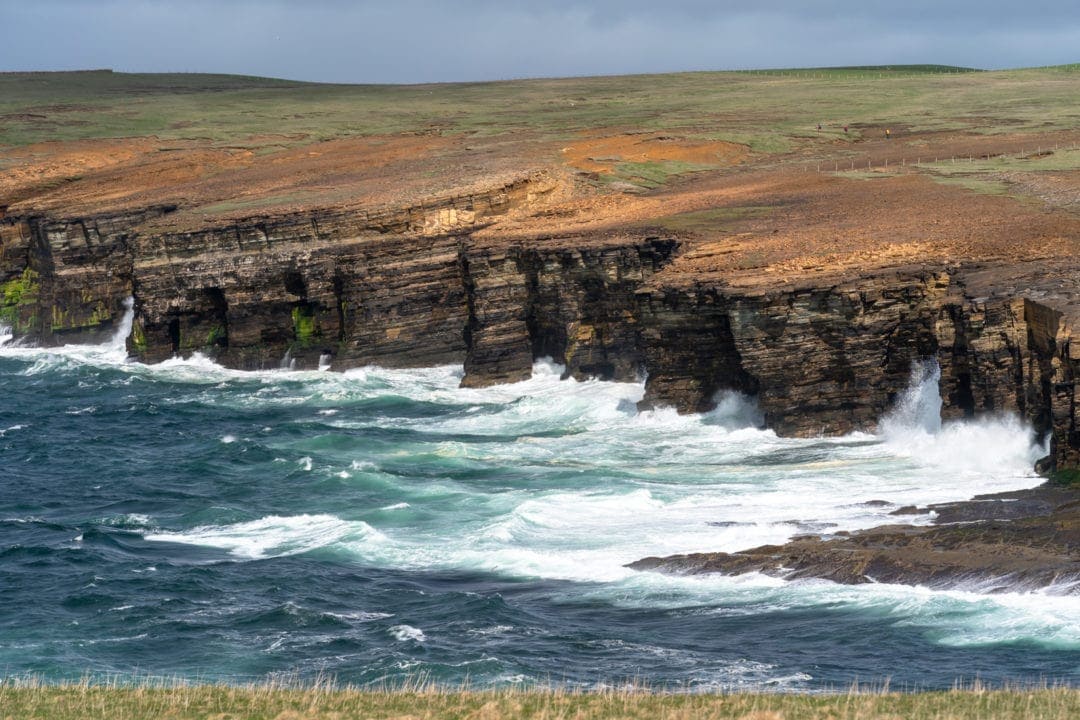
Overview: 3-Day Orkney Itinerary
Day 2 Orkney Itinerary
Orkney Road Trip Itinerary Map
How to Use This Orkney Itinerary and Things to Do Map
- To use this interactive map effectively, click the square icon in the upper right corner to expand.
- A key will appear on the left, guiding you through various locations.
- Clicking on any site reveals detailed information about that spot.
- The map is divided into sections, which you can hide or show by clicking the red square box to the left:
- 🟣 Orkney 3-Day itinerary suggestions
- 🟢 Orkney Wildlife Locations
- 🟡 Orkney Food and Drink
- 🟠 Orkney Walks and Hikes
- 🟤 Orkney Historical Locations
How Long Does It Take to Drive Around Orkney?
Planning a road trip around Orkney? You can drive around Orkney in approximately 3 hours, covering about 100 kilometres (62 miles).
While the basic route can be completed in that time, we recommend allowing more time for a richer experience.
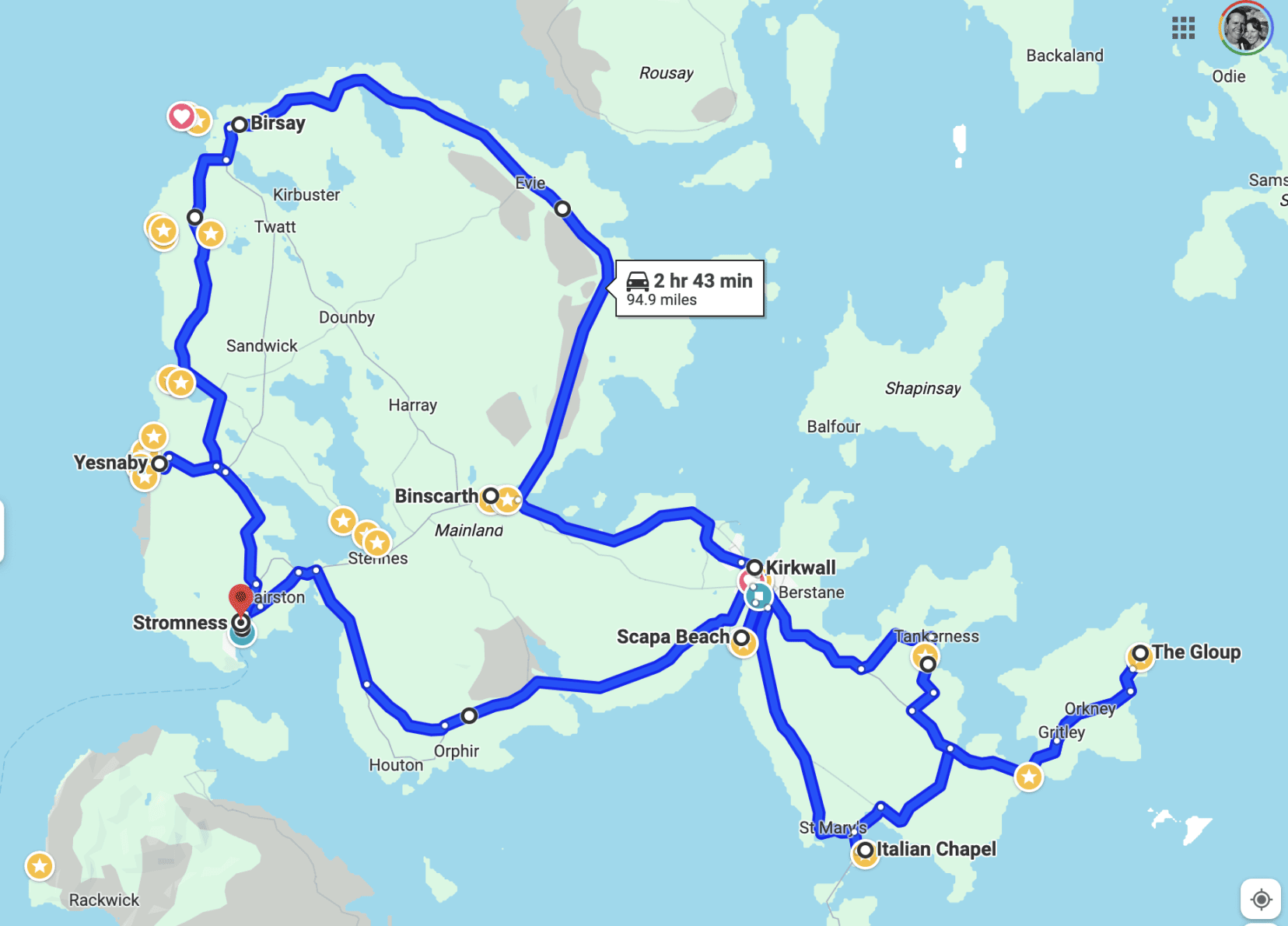
If you are planning your road trip, you may like to download our free printable road trip travel planner to make organising your trip a breeze. Grab your free planner here.
How Long to Spend in Orkney?
While you can drive around Orkney in about 3 hours, the real question is: How much time do you have to enjoy it?
Orkney’s beauty lies in its destinations and the journey itself.
Our route doesn’t just circle the island; it crisscrosses through the heart of Orkney, taking you closer to its famous sites and hidden gems. This means more driving distance but also more opportunities to explore and discover.
Remember, these are estimates for the driving time. To truly experience Orkney – from its enigmatic ancient stones to its dramatic coastal landscapes – you’ll want to stop, explore, and soak in the views.
Our three-day trip to Orkney was enough time to see the main highlights, but we could easily have spent a week or more revisiting certain points in a different light for photography and hiking some of the wild, rugged coastal trails.
Prepare for a journey that’s as much about the road travelled as the destinations themselves.
For more info, refer to our detailed article on road trip planning.
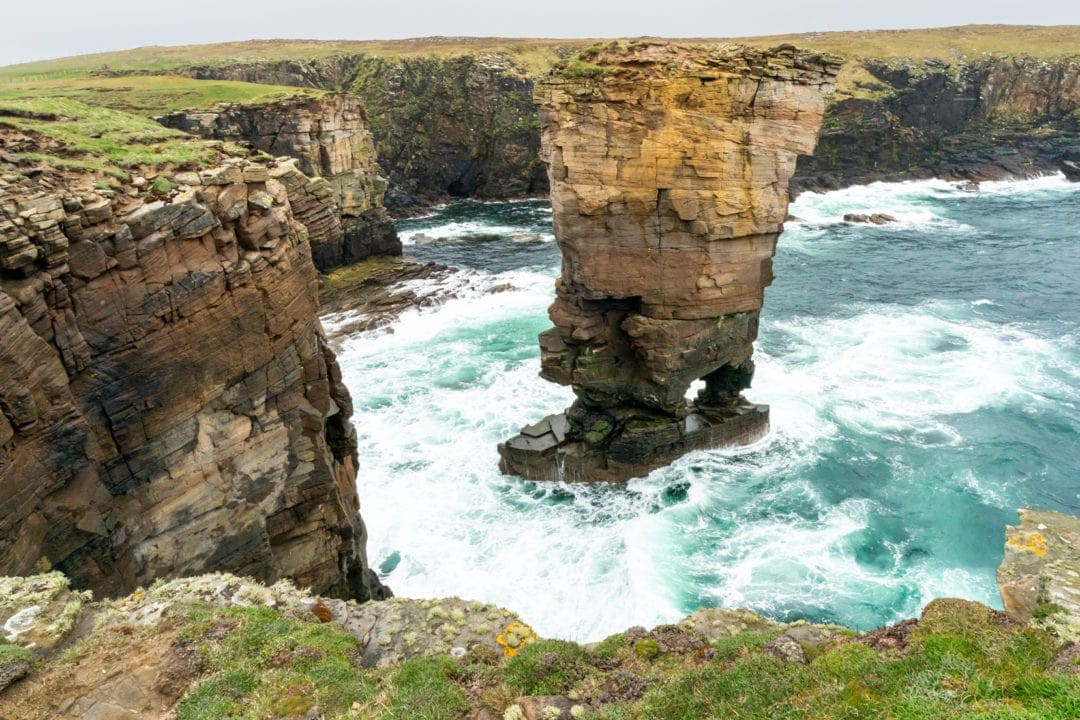
Planning Your Road Trip Orkney Itinerary
The Importance of Timing
One of the main points to consider when planning your Orkney itinerary is the timing of your visit to some of the most popular places.
We suggest arriving early at certain popular tourist spots on Orkney because many cruise ships and tourist coaches visit the island, and these spots can become very congested.
The tour buses tend to arrive from around 10 am to mid-afternoon. So we suggest arriving as soon as they open or near closing time to avoid the crowds. You can also check the cruise ship schedules at the iCentre tourist information centre in Kirkwall.
The most popular tourist spots in Orkney that can often be seen swarming with visitors are:
- Italian Chapel
- Skara Brae
- Ring of Brodgar
- Stones of Stenness
- Maeshowe
And if you want to know when to visit – check out our article on the best time of year to visit Orkney.
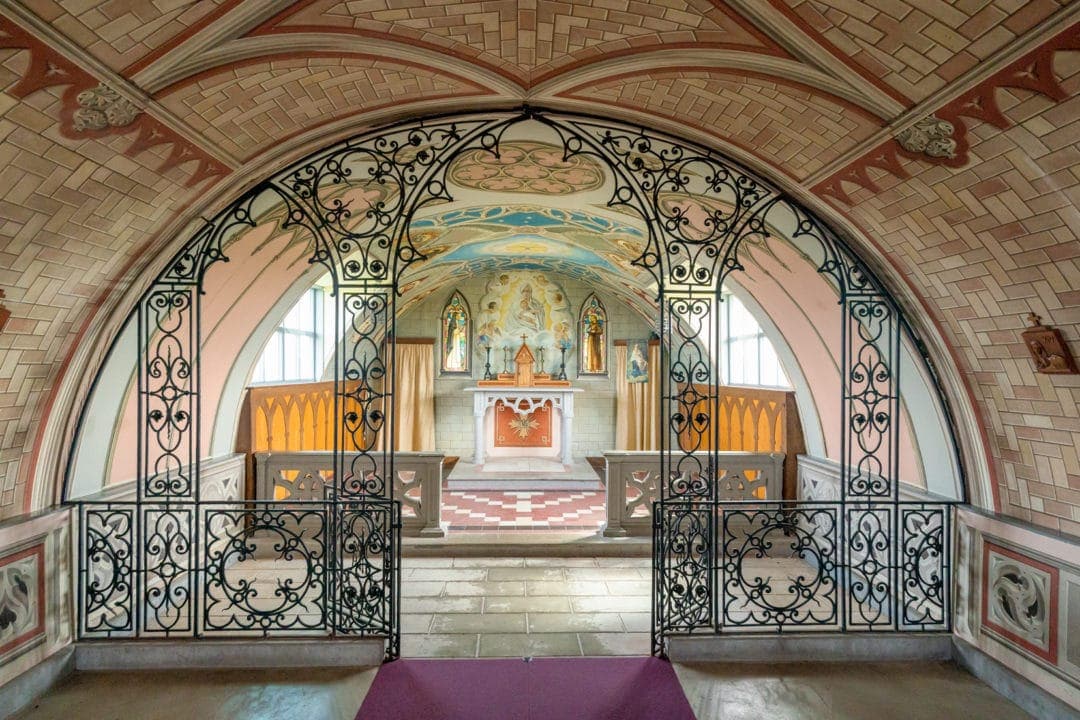
Tailor Your Orkney Adventure: A Personalized Guide
Our flow diagram helps you pick destinations that align with your interests. You can follow our suggested Orkney 3-day itinerary below or use it as a guide to plan your own.
Whether you’re a history enthusiast, nature lover, photography aficionado, or seeking adventure, this guide directs you to the places in Orkney that you’ll find most captivating.
We have included these places in the interactive map above to help you plan your itinerary.
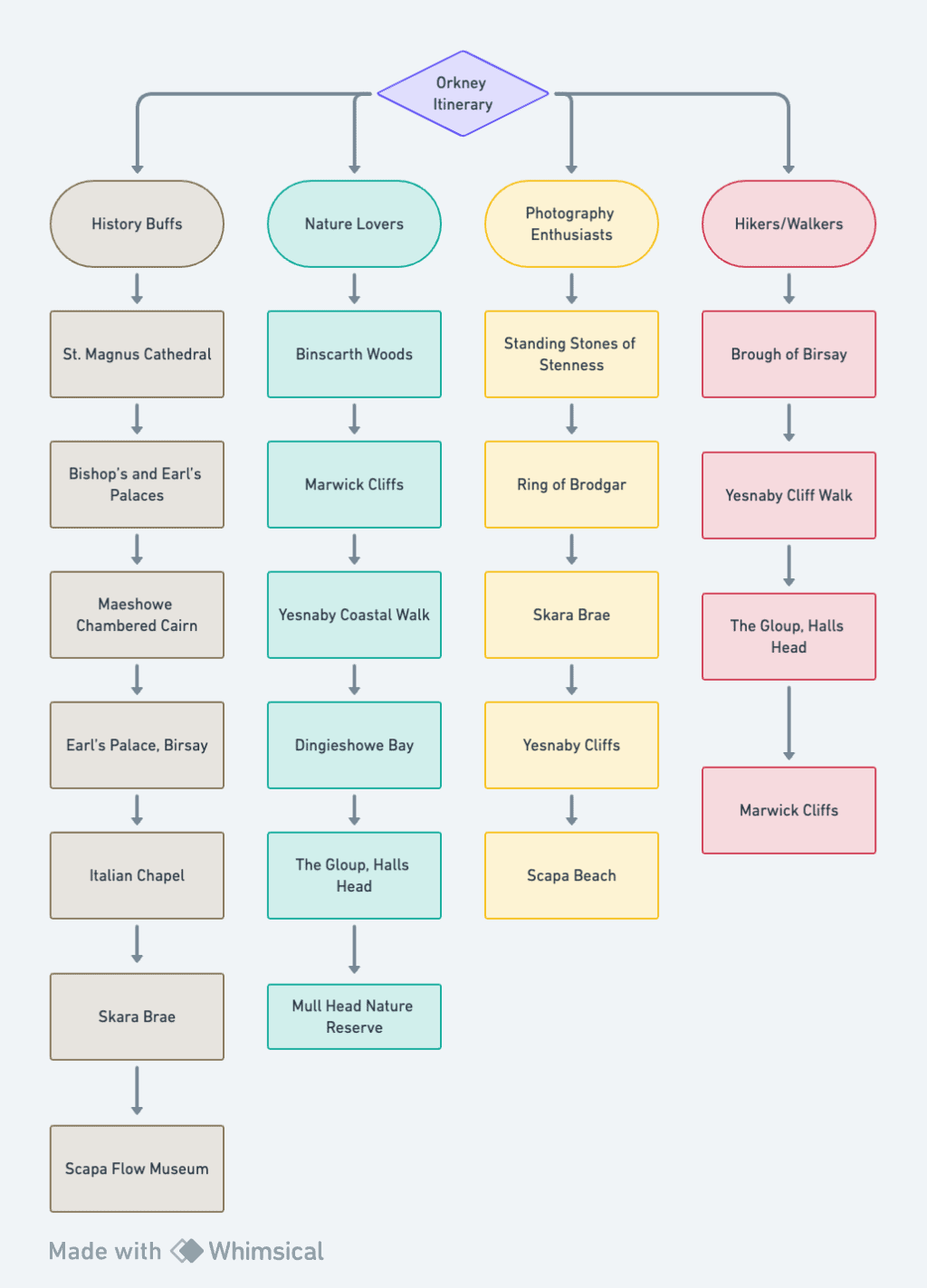
Planning a Trip to the U.K.?
- 🚗 Hiring a car? We recommend getting a quote from DiscoverCars
- 🚐 Hiring a campervan? We recommend Motorhome Republic
- ⛑ Arranged your travel insurance? Compare quotes from World Nomads & Safetywing
- 🪪 Order your International Driver’s Licence online here
- 🏩 Booked your accommodation? We use Booking.com to find the best deals
- 🐾 Is someone pet-sitting for you? 🐾 We use and love TrustedHousesitters
- (Get 25% off at checkout for new memberships with our discount code: LIFEJOURNEY25)
Orkney Itinerary: Day One
1. Kirkwall Visitor Centre
Your first stop on your Orkney Itinerary should be the Kirkwall Visitor iCentre, where you can pick up the latest free Islander Magazine and receive a rundown of any local events that may be happening while you are in Orkney.
You can also pick up an updated leaflet with all the opening times of the island’s attractions. The staff at the visitor centre were extremely helpful, and plenty of brochures cover all interests.
2. Kirkwall St Magnus Cathedral
St Magnus Cathedral, the Light of the North, is the most northerly cathedral in the UK. Viking Earl Rognval commissioned this impressive red and yellow sandstone building in memory of his martyred uncle, St. Magnus, in 1137 (now Orkney’s patron saint).
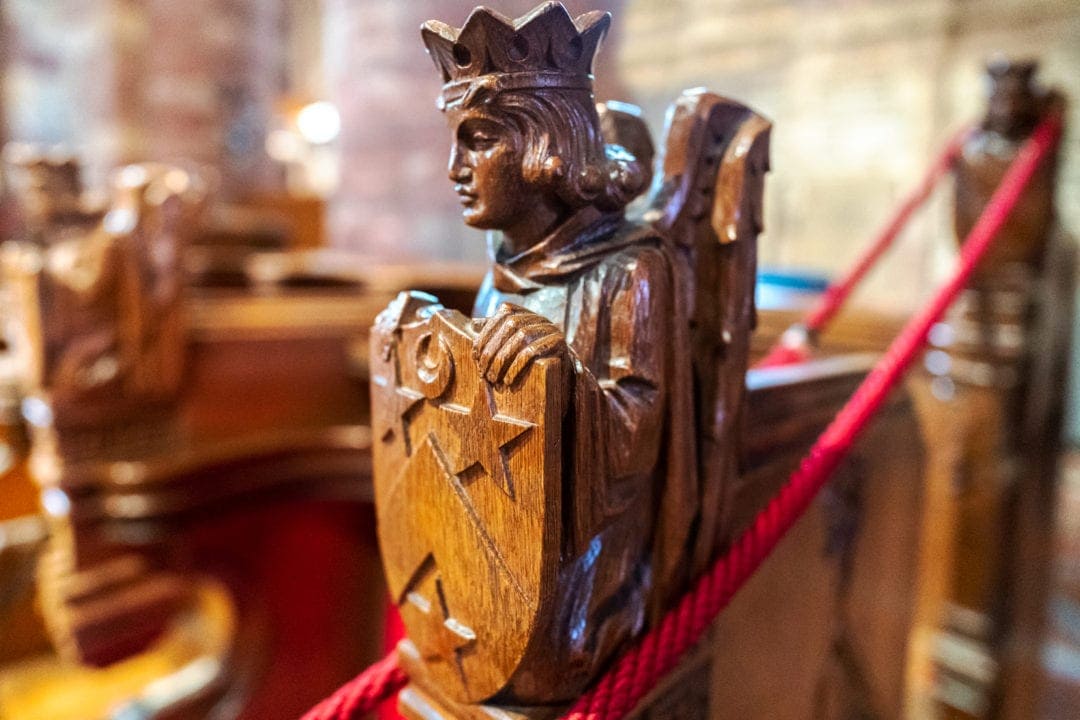
St. Magnus Cathedral took an incredible 100 years to build and is the only wholly medieval cathedral in Scotland. Unusually, it is not owned by a Parish but by the people of Orkney. King James III of Scotland gave the cathedral to the people of Kirkwall in 1486.
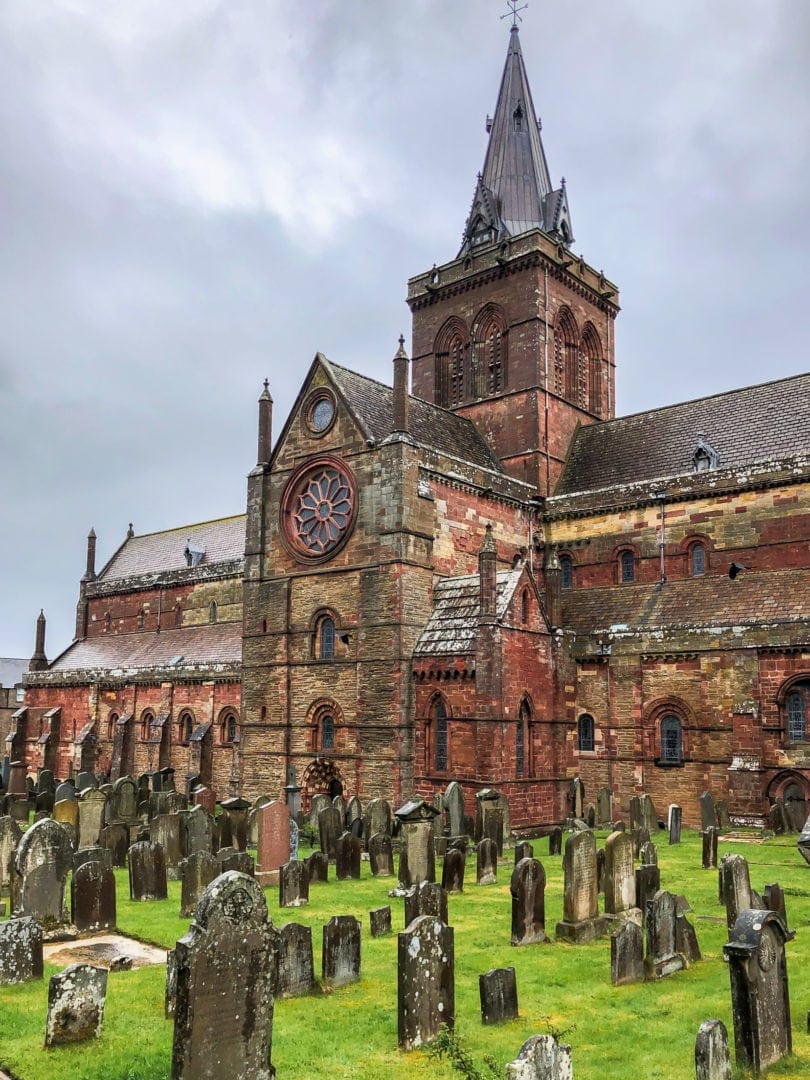
You can book a tour of the cathedral, or once inside the cathedral, you can download the St Magnus App, which contains audio descriptions, images and videos (remember to bring your earphones).
If you don’t want to do either of those, and you enjoy a good treasure hunt, grab the ” Graffiti, Carvings and Inscriptions in St Magnus Cathedral‘ leaflet, either in the cathedral itself or in the visitor centre.
The leaflet includes a map detailing interesting marks and writings in various places inside the cathedral. We had a lot of fun hunting down the different markings and learning what they might have meant.
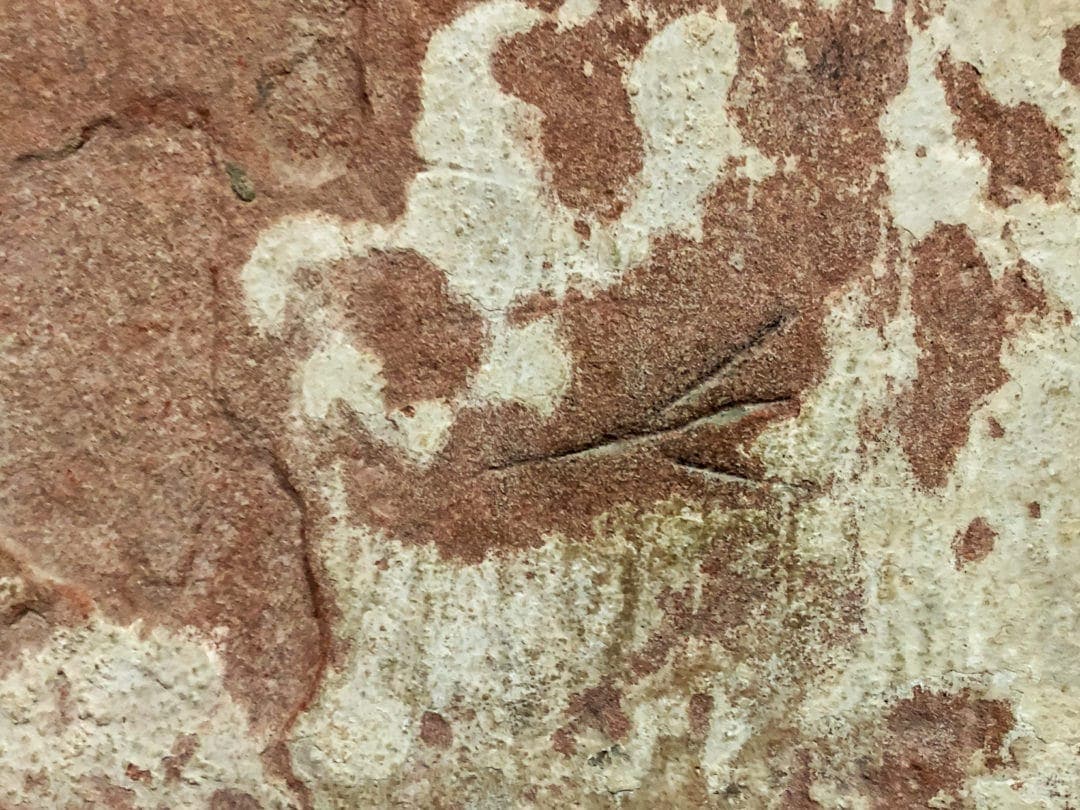
The cathedral’s Visitor Centre is just a minute’s walk away. There, you can watch a 15-minute video about the Saga of St Magnus and the cathedral’s history.
It’s well worth a quick stop and might be good to do before you visit the cathedral. It will give your visit more context as you wander around this impressive building.
Free Entry to St Magnus Cathedral.
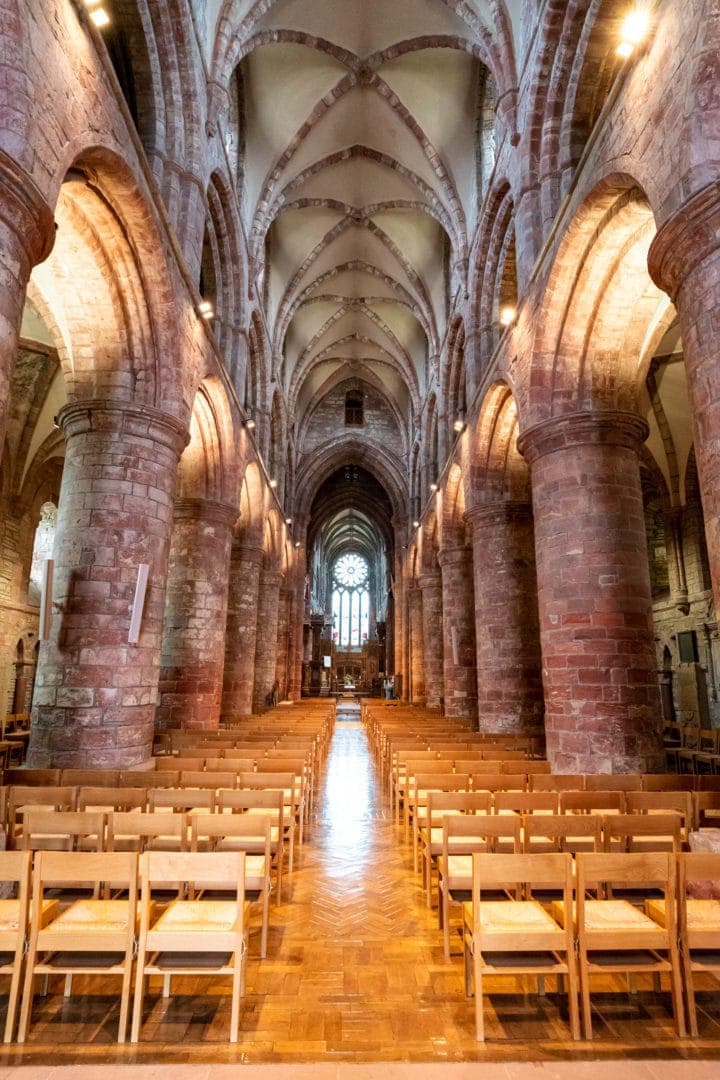
3. The Bishop’s and Earl Palaces
In the heart of Kirkwall, opposite St. Magnus Cathedral, is the Bishop’s Palace, originally built in the 1100s.
However, in the early 1600s, it became part of a larger Renaissance Palace built for Earl Patrick Stewart, the 2nd Earl of Orkney.
Patrick Stewart and his father, Robert, the 1st Earl of Orkney, were ruthless and violent rulers who oppressed their people and used local slave labour for their building projects.
Patrick, or Black Patie, as he was known, was the illegitimate cousin of James VI. Luckily for the Orcadians at the time, Patrick was beheaded for treason in 1615. Interestingly, the beheading was delayed so that the earl could learn the Lord’s Prayer!
The palace, one of Scotland’s finest Renaissance buildings, was then transferred to the Bishop of Orkney.

4. Orkney Museum
The Orkney Museum tells Orkney’s story, from the Stone Age to the Picts and Vikings to the present day. The museum, once Tankerness House, is a listed building and was once the Baikie family home.
The house opened as a museum in 1968, and its gardens, Tankerness Gardens, are now a walled public space to enjoy, sheltered from the Orkney wind.
The museum holds many interesting and informational relics. The information is organised chronologically, taking you through thousands of years of Orkney history.
Entrance is free
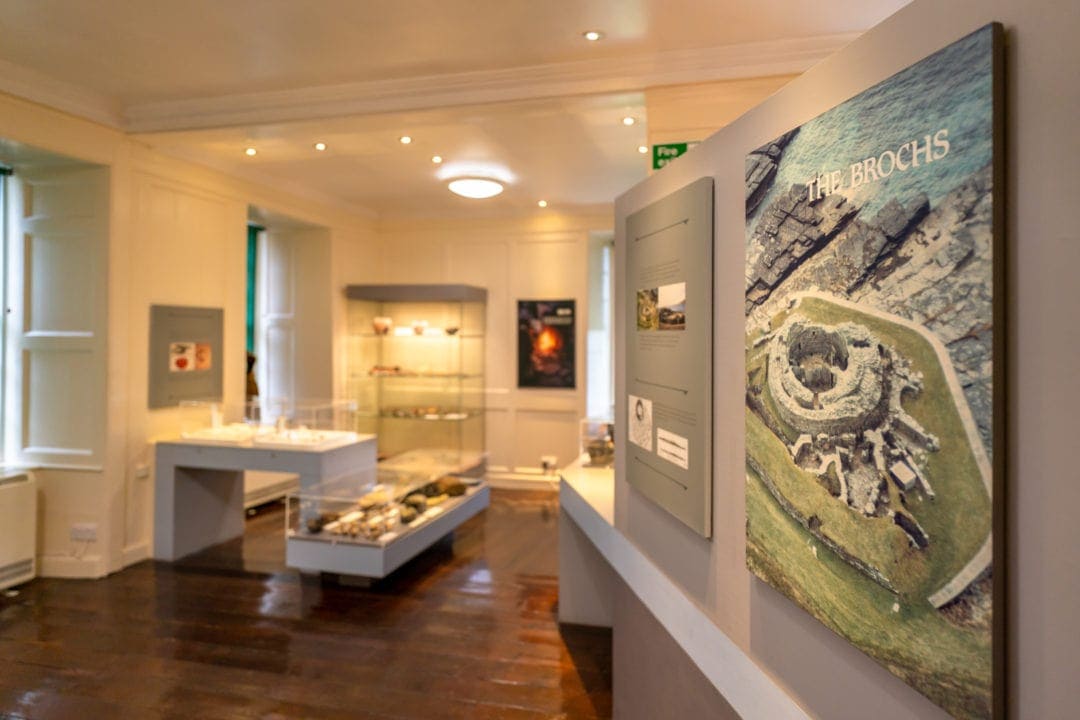
5. Binscarth Woods
If you visit Orkney in spring, plan a trip to Binscarth Woods. Although Orkney is renowned for its lack of trees, you will find a few pockets of woodland, and this was a gem of a find.
A beautiful array of bluebells carpeted the woodland floor, and even the sun played ball by casting dappled sunlight through the trees to highlight their brilliance.
Even if the bluebells aren’t flowering, the woodlands surround a pretty burn (Scottish for stream), and the trail makes for a lovely looped walk, or you can choose to take a longer stroll and walk further on to the nearby Loch of Wasdale.
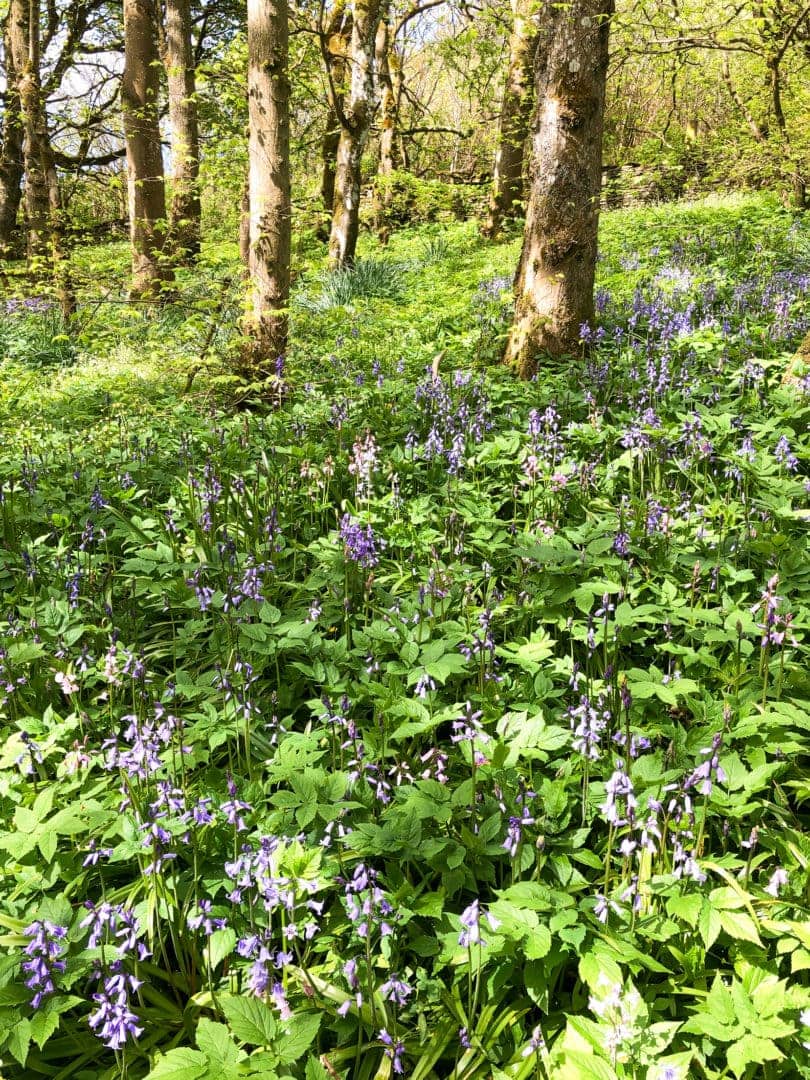
6. Standing Stones of Stenness
The Standing Stones of Stenness are part of the Heart of Neolithic Orkney, which UNESCO granted World Heritage Status in 1999 as a location of outstanding universal value.
The Heart of Neolithic Orkney includes:
- Ring of Brodgar,
- Skara Brae and
- Maeshowe.
Only four of the original twelve stones still stand, the tallest reaching six metres. These Neolithic stones are believed to have been erected in 3300 BC.
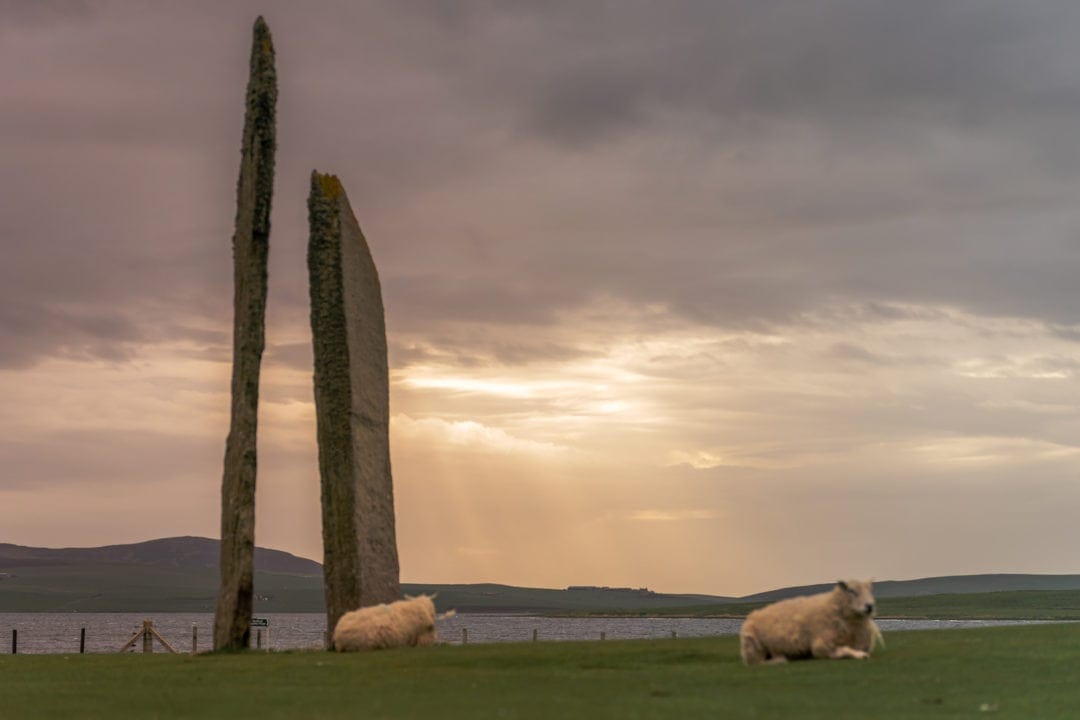
7. Ring of Brodgar
The Ring of Brodgar is said to be one of the oldest stone circles in the world, dating to about 2500 – 2000 BC.
So it is no wonder that this bewitching ring of stones, with a diameter of about 100 metres, is part of the Heart of Neolithic Orkney World Heritage Site.
Standing by these ancient pillars, there seems to be a thin veil between the present and the past. Perhaps I’ve been watching too many episodes of Outlander, but I’m sure on a moon-filled night … you might just stumble into another world, into another time.
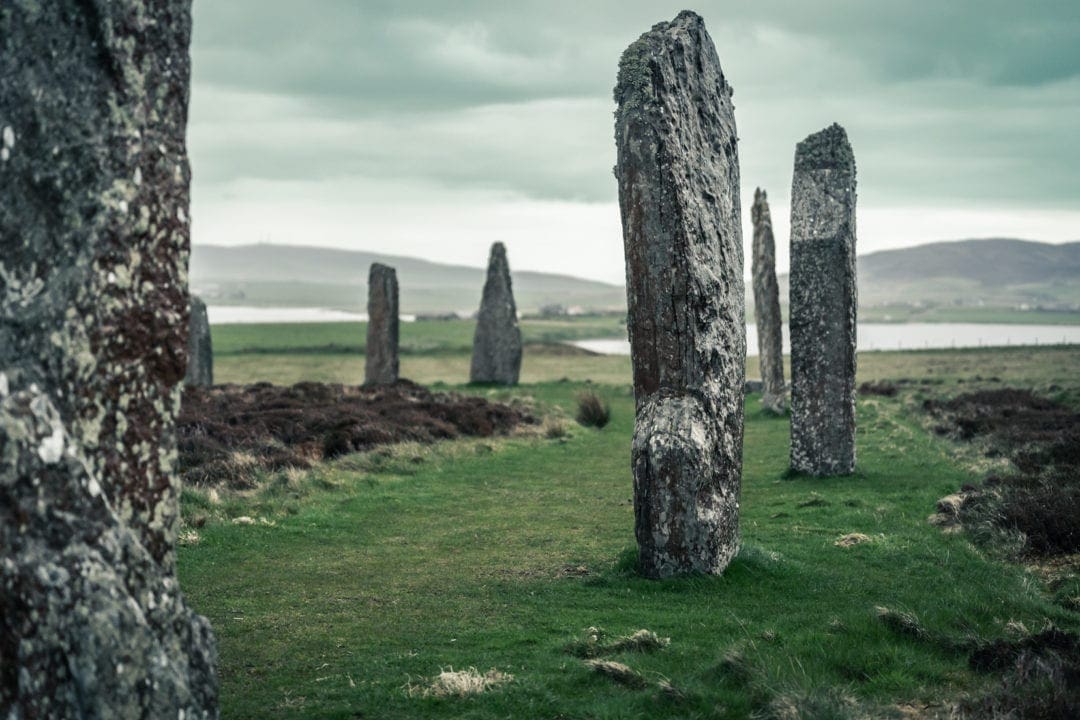
The Ring of Brodgar Stones is the largest stone circle in Scotland. Only 27 of the original 60 stones remain, ranging from two metres to four and a half metres tall.
No one is sure about the purpose of the stones. However, many believe this was a place of worship or celebration aligned with the solstice and equinox.
It would be a magical place to stand at Summer Solstice.
This stunning landscape of ancient standing stones amidst lochs Harray and Stenness is home to RSPB Brodgar Nature Reserve.
Watch for curlews, drumming snipe, lapwings, dunlins, redshanks and oystercatchers.
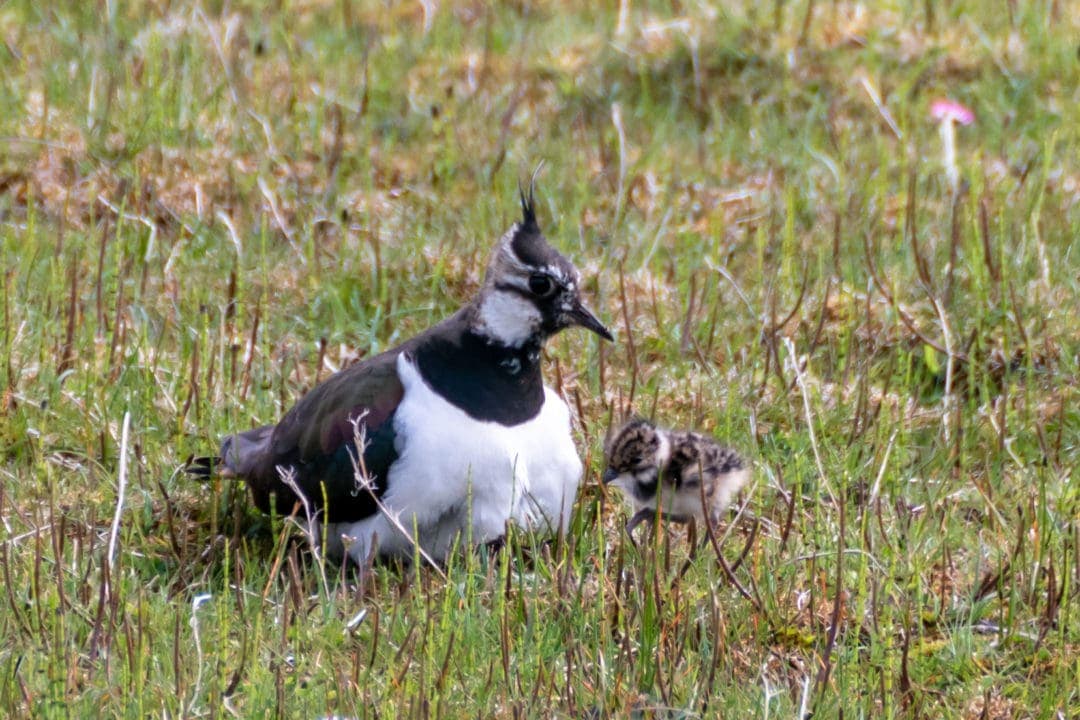
Orkney Itinerary: Day Two
8. Skara Brae
Skara Brae must be the most famous of Orkney’s landmarks. This neolithic treasure, on the banks of Skaill Bay, was only discovered in 1850 when high tides and storms ripped off the turf on a small hill and uncovered some of the ruins.
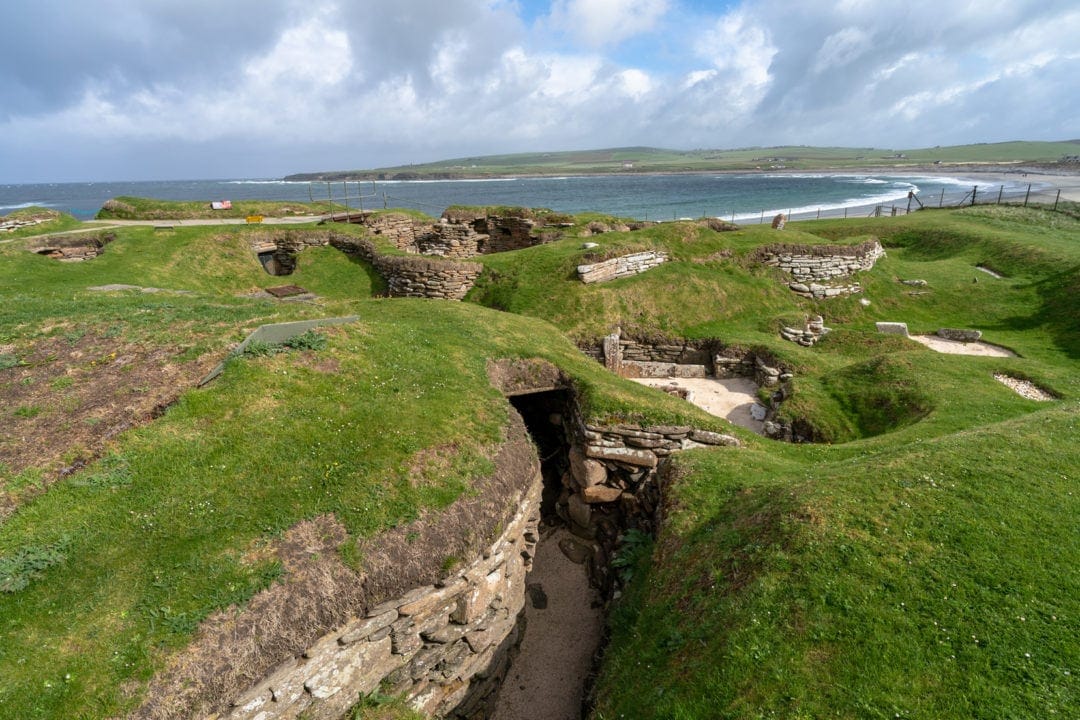
The village of Skara Brae, hidden under the sand for thousands of years, revealed furniture, tools and jewellery of that time. Eight buildings exposed the secrets of how life was once lived in these ancient houses.
Skara Brae is said to be Europe’s most well-preserved Neolithic village. It is hard to believe that these 5000-year-old Stone Age remnants predate Stonehenge and even the Pyramids.
Archaeologists believe the settlement was used for about 600 years, but it is still a mystery why the inhabitants suddenly left.
I found this Travel Through Time interview with archaeologist Neil Oliver about Neolithic Orkney and Skara Brae very interesting.
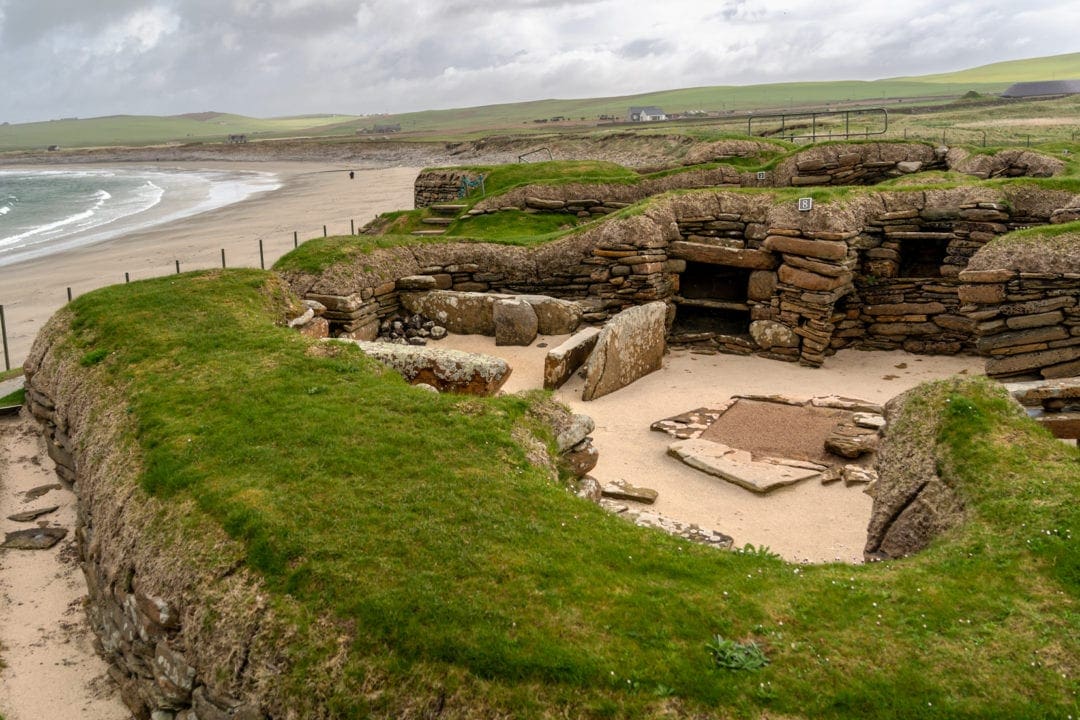
The visitor centre is the first port of call when visiting Skara Brae. Combs, needles, and mysterious spheres excavated from Skara Brae are displayed. The centre also has a video presentation about the ruins, a gift shop, and a cafe.
Moving on from the visitor centre, you step outside to a replica of a Skara Brae house, where you gain insight into what living in one of these stone-age houses was like.
Further along the bay, you come to the actual Skara Brae prehistoric village, and a winding path takes you between the houses, which still have their stone furniture of hearths and beds.
Entry to Skara Brae is free with a Historic Scotland membership or an Explorer Pass
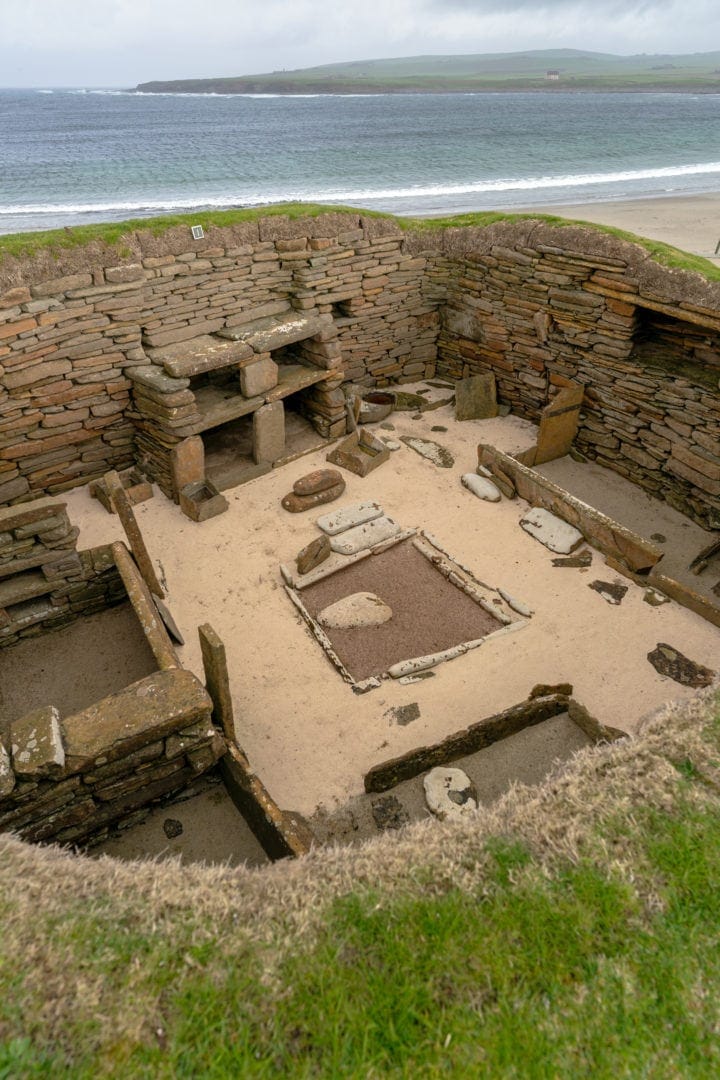
9. Skaill House
The entrance price to Skara Brae also includes access to the adjacent 17th-century Skaill House, once the home of William Watt, 7th Lord of Breckness, who discovered Skara Brae.
The original building was a manor house built by Bishop Graham of Orkney in 1620, but evidence shows that a Norse burial ground was under the house’s foundations.
The manor passed on the Bishop’s death to his son John, who became the 1st Lord of Skaill. The manor continued to be passed down through the family through twelve generations of Lairds. It was lived in until 1991, is now open to the public, and retains its 1950s decor and memorabilia.
Keep an eye out for any spooky visions or smells. There are tales of strange smells filling the rooms and ghosts living in the manor—but only friendly ones.
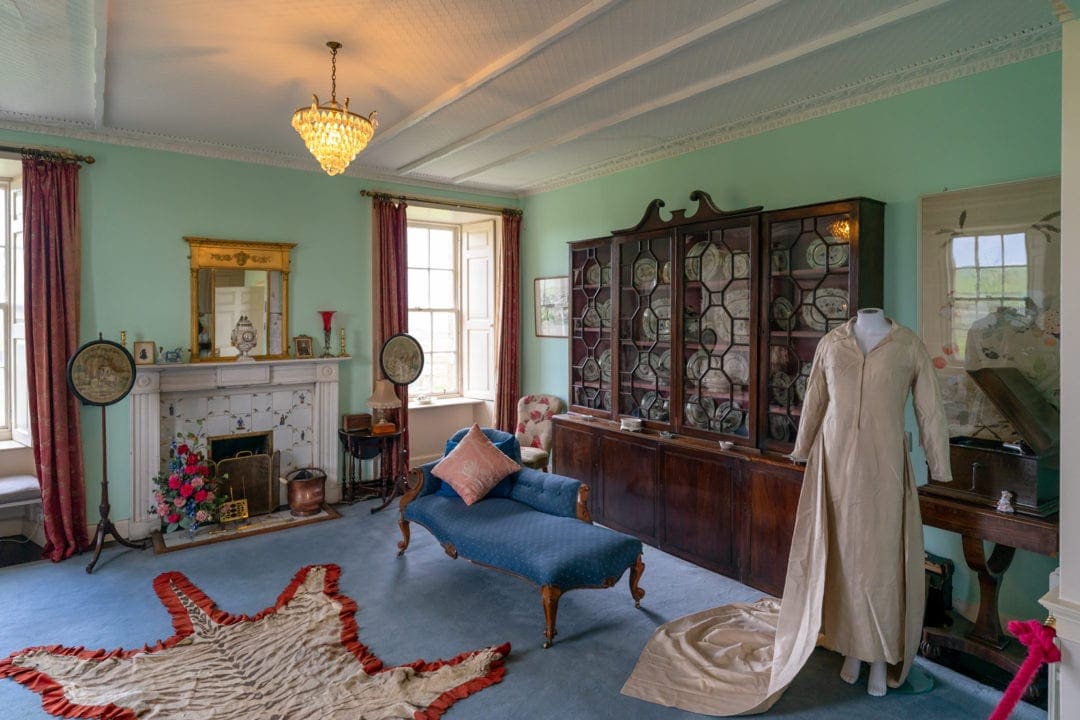
10. Maeshowe Chambered Cairn
Unfortunately, the cairn was closed for conservation work in Orkney, but it opened again a few days after we left.
Maeshowe’s chambered tomb is one of the four monuments in the heart of Neolithic Orkney. From the outside, it looks like a grassy mound, but inside, huge stone slabs form a chambered burial tomb.
It was built around 5000 years ago, but thousands of years after it was closed up, the Vikings broke into it, and today, Viking graffiti can be seen on some of the walls.
Visits to the cairn are by a one-hour guided tour that leaves by bus from the Stenness Visitor Centre.
The Maeshowe Cairn Tour times are 10 am, 11.30 am, 2 pm and 3.30 pm.
11. Brough of Birsay
The Brough of Birsay is a small tidal island that can only be reached at low tide by walking across a concrete causeway.
Puffins and many other sea birds gather here in late April on the cliffs. We spotted some on the western cliffs near the lighthouse. A local also told us that puffins are often seen on the far east cliffs of the island, too.
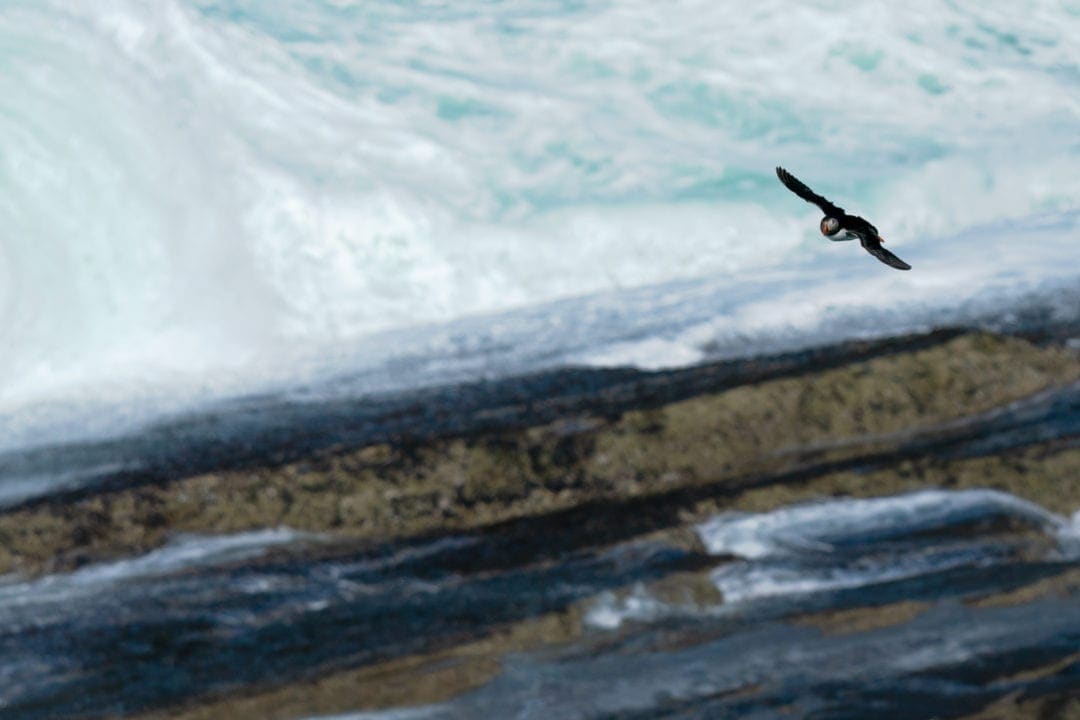
The island still contains the Norse remains of a church that was a place of pilgrimage in Medieval times and remnants of past Pictish and Viking settlements.

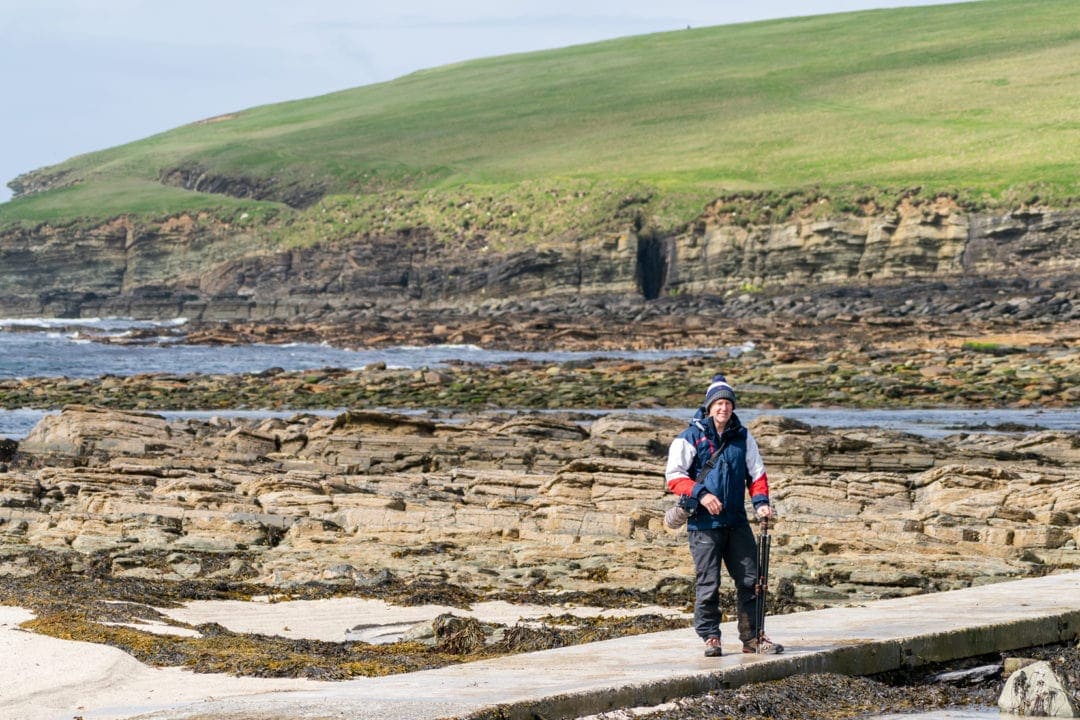
Check the low tide times and whether the island is accessible for two hours on either side during the low tide time. Or you can visit the tourist information centre in Kirkwall to get a printout of tide times.
12. Earl’s Palace, Birsay
This palace was built around the 1570s for Earl Robert Stewart, the 1st Earl of Orkney. Robert, the illegitimate half-brother of Mary Queen of Scots, was a bully and tyrannical ruler.
The palace was a building with a combination of Renaissance architecture and fortifications of cannon holes in all the palace walls. A sign that the times back then weren’t exactly peaceful.
13. Marwick Cliffs
Marwick Cliffs are a haven for seabirds and is known locally as ‘Seabird City’. Not only are the cliffs full of birds, but you’ll notice a castle-like shape, the Kitchener Memorial, on the cliffs. It was erected in 1926 and stands 48 ft high.
The monument looks over the cliffs where the HMS Hampshire hit a mine and sank in 1916 during WWI. Field Marshall Kitchener died along with 737 men.
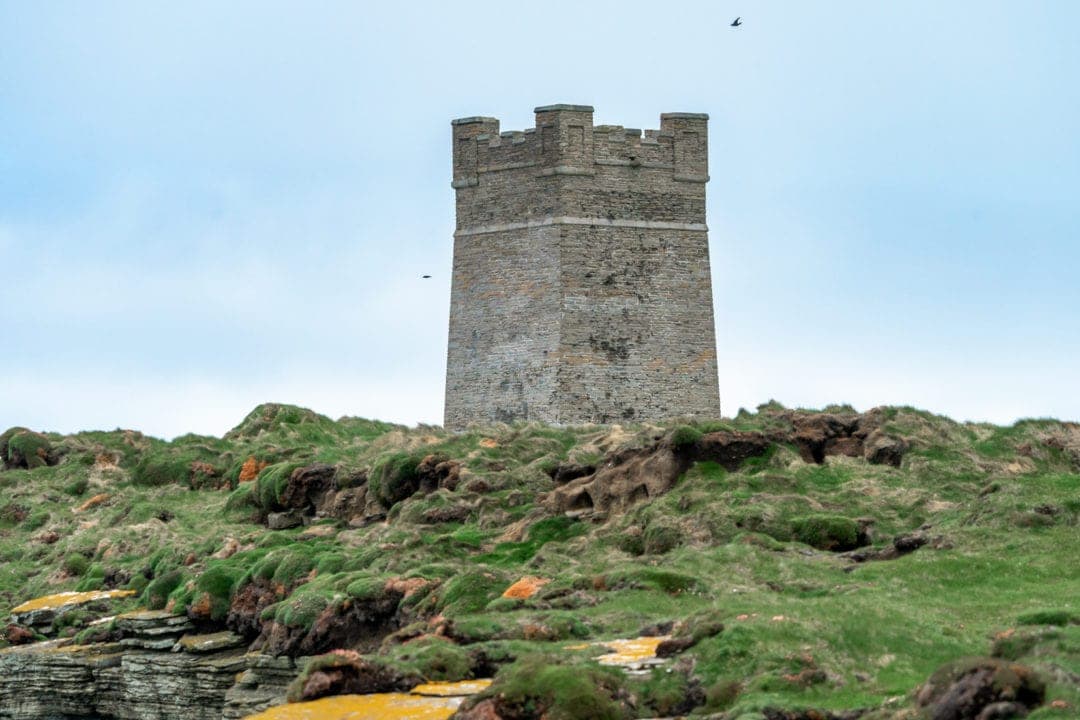
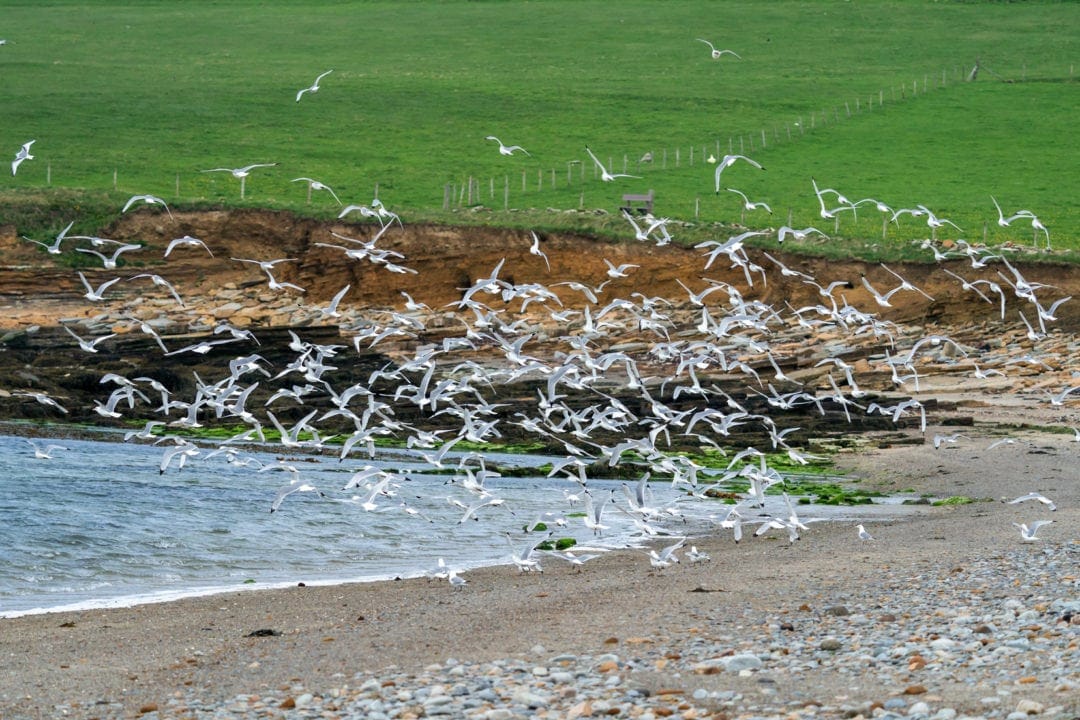
14. Yesnaby Coastal Walk
Yesnaby Cliff Walk is one of Orkney’s wildest, most rugged and invigorating walks. Majestic sea stacks withstand the battering waves. The most famous is Yesnaby Castle, one of Orkney’s most photographed sea stacks.
Parking is at the site where WWII anti-aircraft buildings were in operation. The buildings are crumbling now, worn down by the persistent winds and harsh, eroding sea salt. A few information boards tell you about the area.
But the real experience is walking along the wind-whipped clifftops as the sea churns and shapes the landscape below.
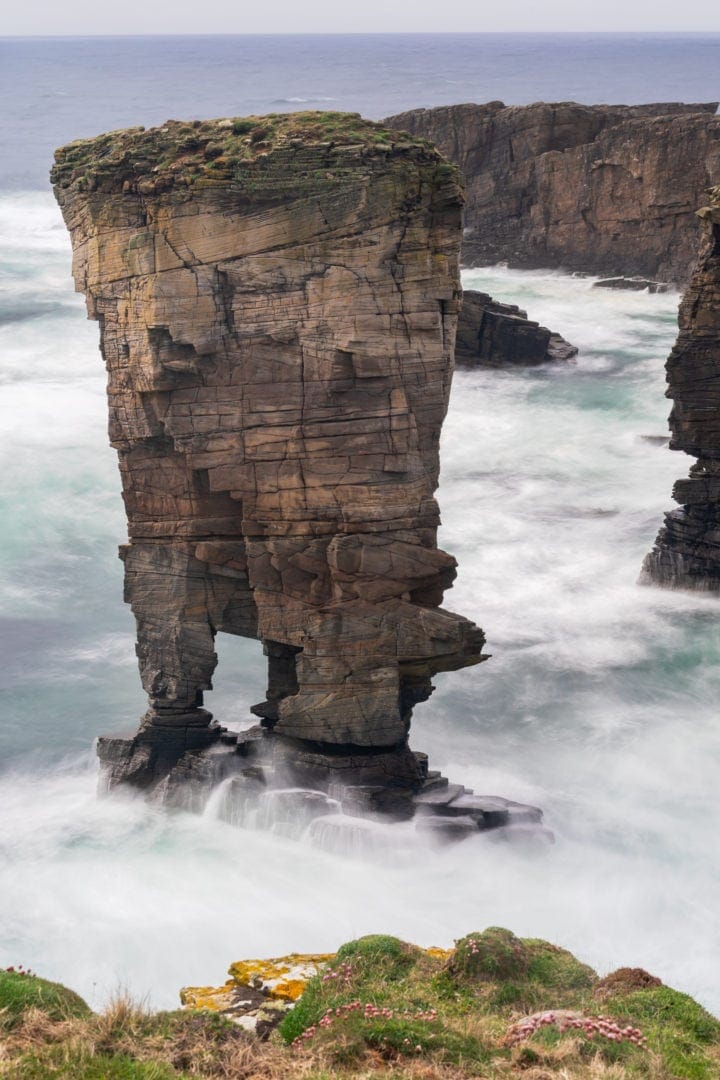
Orkney Itinerary: Day Three
15. Italian Chapel
This unusual and exquisite chapel, created by Italian prisoners during the Second World War, is on Lamb Holm Island. To reach it, you cross one of the Churchill Barriers, built by the prisoners during the war.
The Italian prisoners, led by Domenico Chiocchetti, converted two wartime Nissen Huts into a beautiful chapel. They used old tin cans to create intricate lanterns and painted the walls in 3D, replicating beautiful brickwork and plasterwork. The craftsmanship is incredible.
Orkney Itinerary Tip: Remember to visit the Chapel first thing in the morning or near closing as it becomes very busy with tour buses arriving.

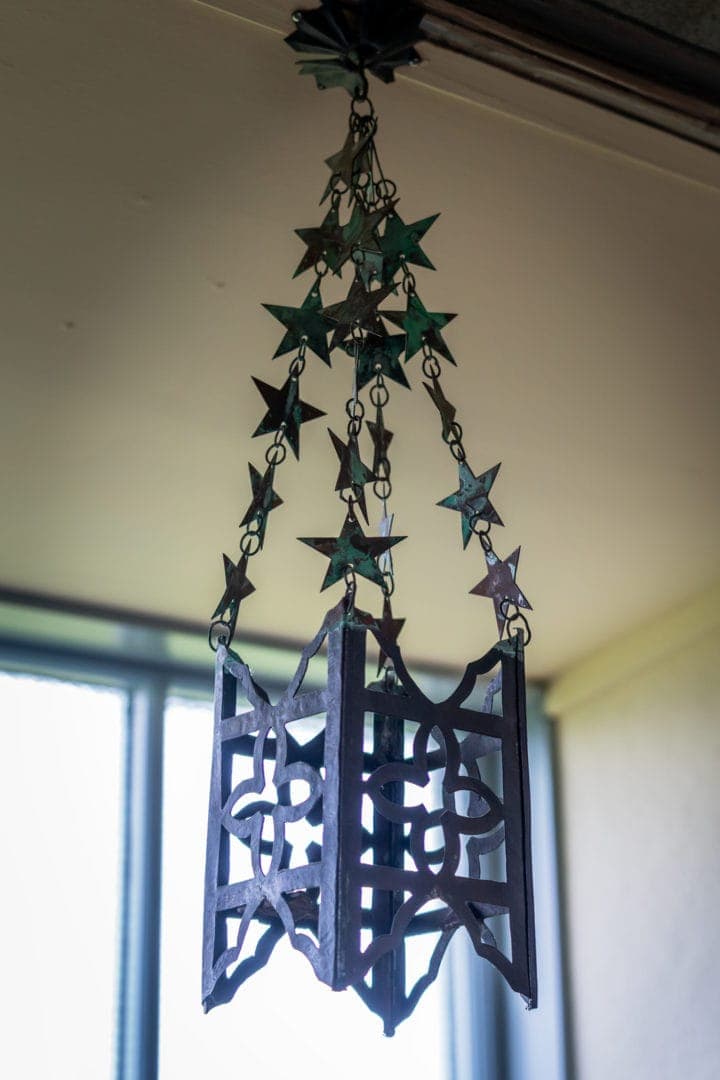
16 Churchill Barriers
The Churchill Barriers were built during World War II to protect the Scapa Flow naval base in Orkney.
Before the barriers, block ships were put in place but proved ineffective when a U-boat entered the Scapa Flow and sank the Royal Oak. (See Scapa Bay for the memorial honouring the 835 lives lost.)
You can still see some rusting blockships alongside some of the Churchill barriers.
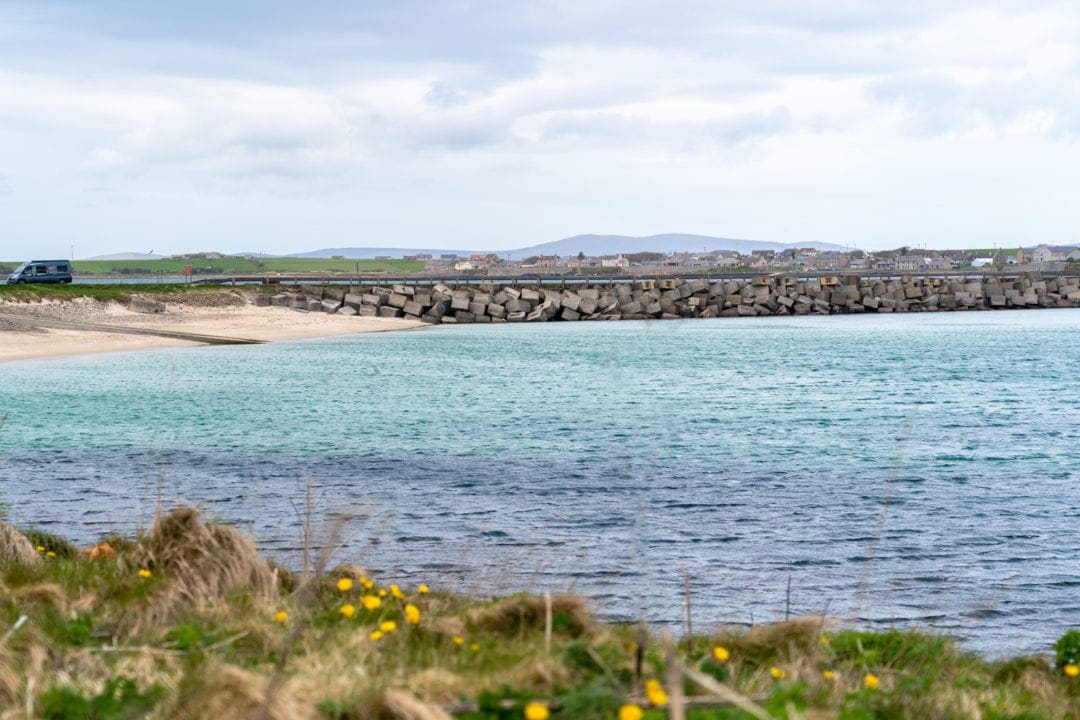
17. Dingieshowe Bay
At Dingieshowe Bay, you’ll find a mound above the sand dunes where Vikings used to meet to make decisions. Orkney folklore tells of dreaded trolls (trows) living here and that locals once feared the place.
Across the road from Dingieshowe Bay, on the opposite side of the promontory, is a more sheltered bay where you can see the remains of a row of ‘dragons teeth’, a WWII defence barrier to prevent tanks from landing onshore.
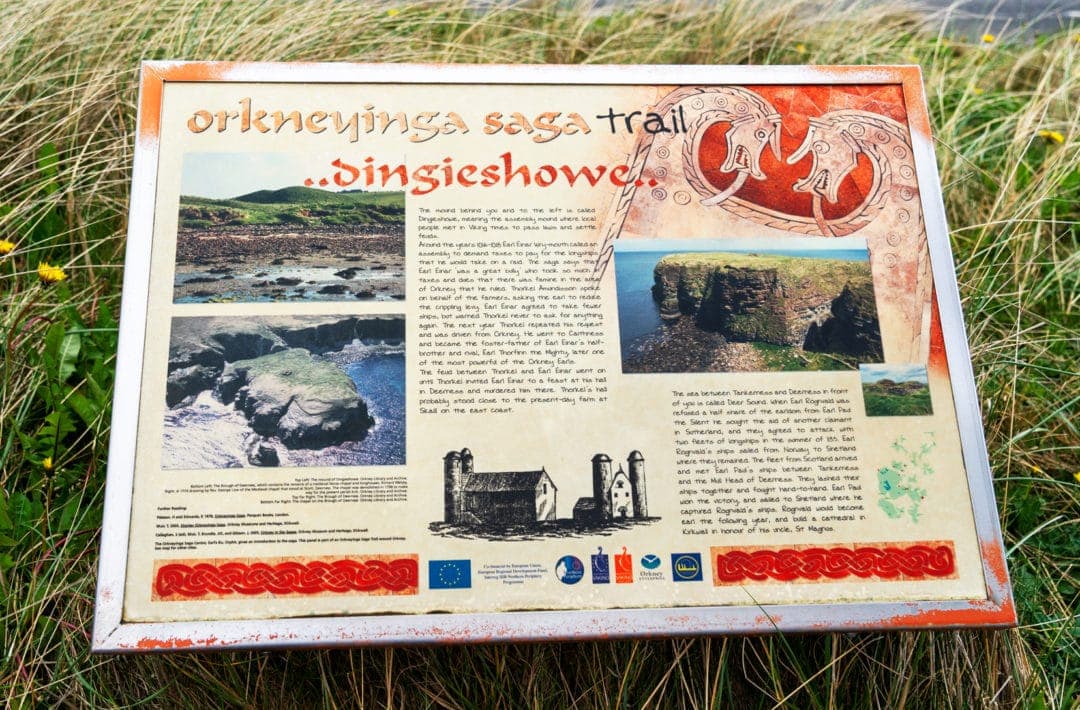
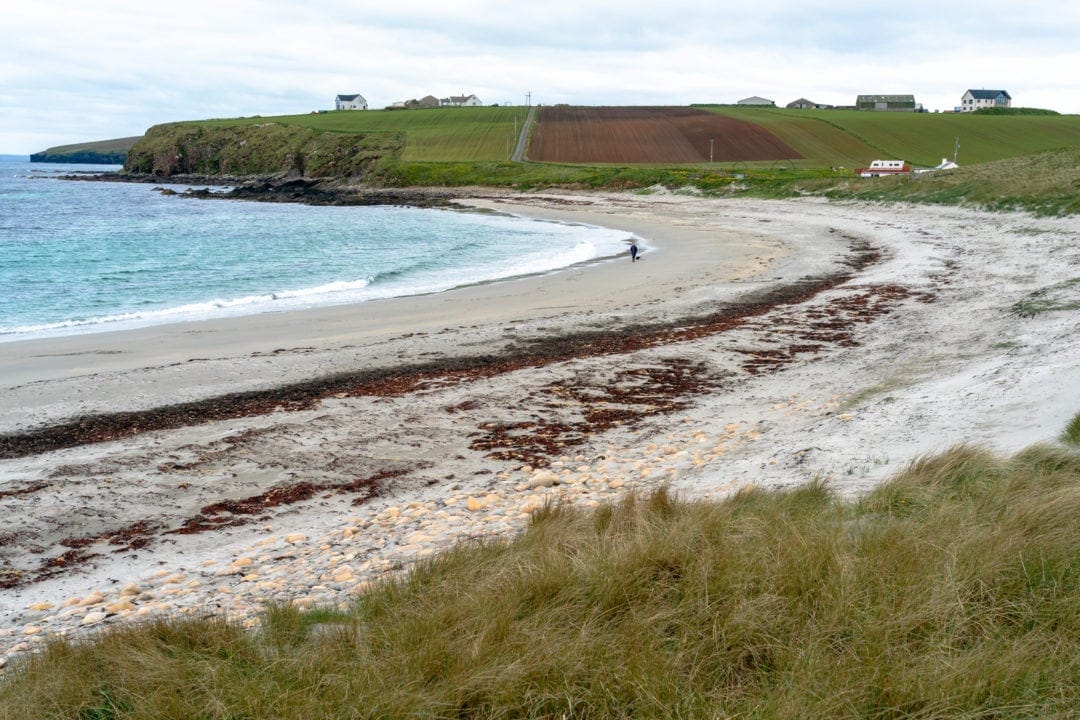
18. The Gloup, Mull Head and Brough of Deerness
The wind was blowing a hooley, but that didn’t stop us from enjoying the walk at Mull Head.
Swallows darted in and out of The Gloup, and further along the coast, we spotted the ever-colourful, orange-beaked oystercatchers, black guillemots (the ones with red feet as compared to plain guillemots with black feet),) and eider ducks nibbling on the seaweed.
The Gloup name comes from the old Norse word, Gluppa, meaning chasm. The Gloup is a collapsed sea cave with a drop of 80 feet to where the ocean crashes through the blowhole at the bottom.

This is a stunning part of Orkney’s coastline and is part of the 200-acre Mull Head Nature Reserve. There are walks along the coast here, and it is also home to the Brough of Deerness.
The Brough of Deerness is an outcrop of rock where you’ll find the ruins of a Norse church and settlement, accessed by rock-cut steps.
Unfortunately, the Brough of Deerness was closed for renovations when we were there.
If you would like a long walk around the coast, an easy to moderate 10 km/6-mile trail takes you on a circular route from The Gloup carpark, along the coast and Mull Head and back. (See map) The approximate time for the full walk is 3 hours.
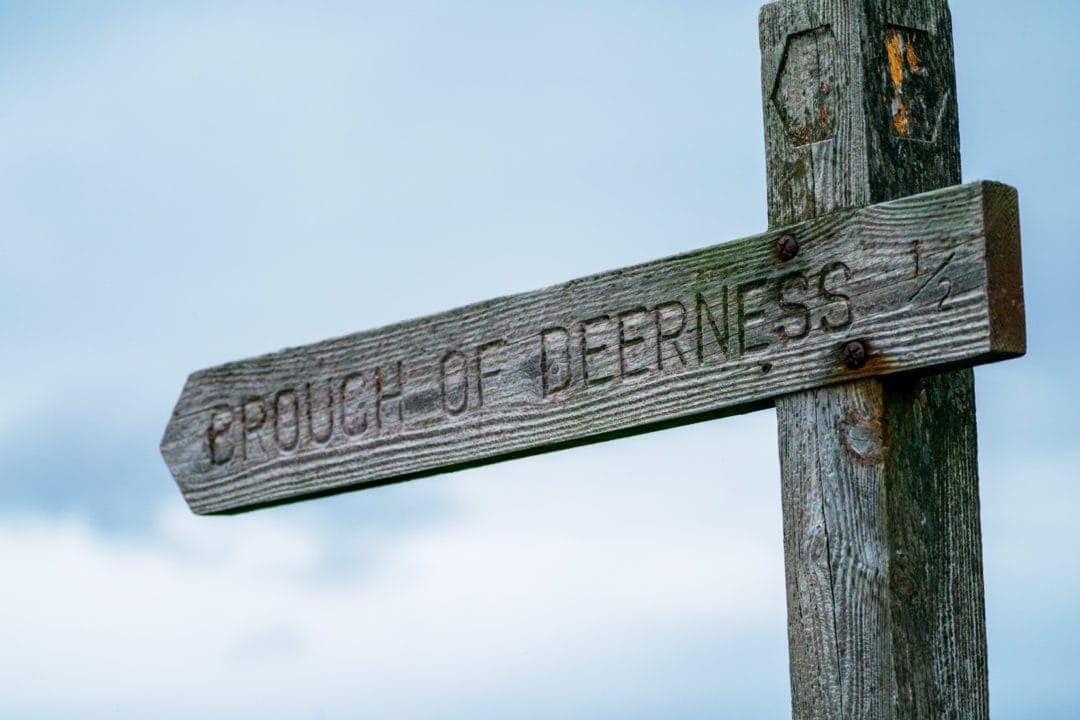
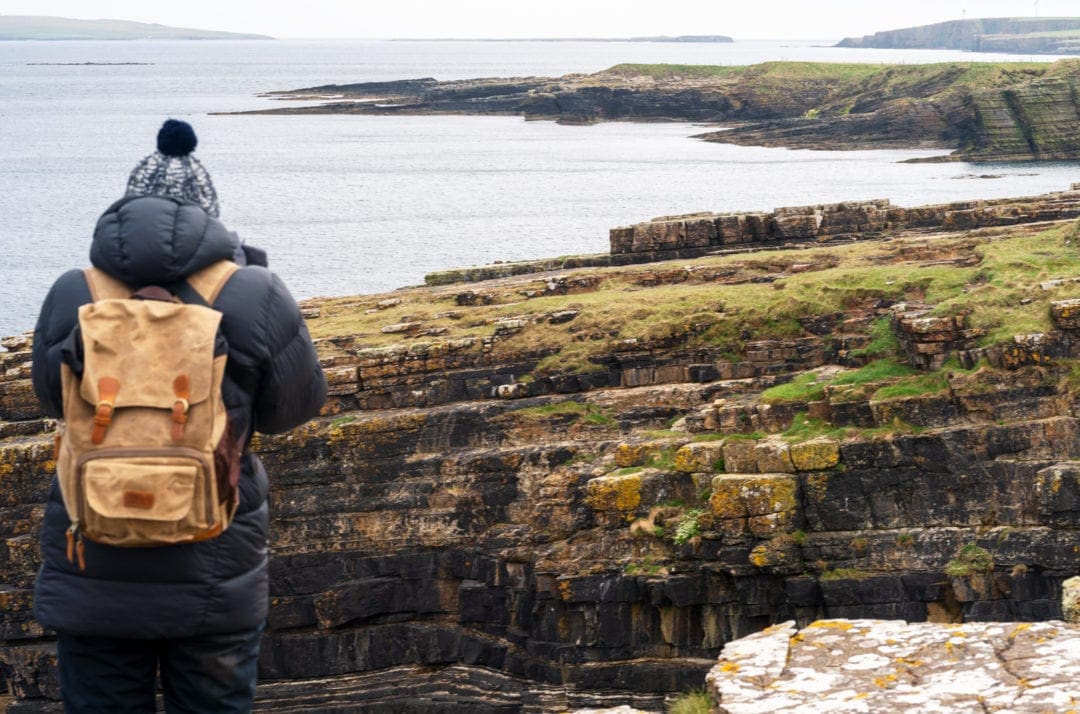
19. Kirk Gallery and Cafe
Stepping into the Kirk Gallery and Café in Tankerness, just outside Kirkwall, it is crystal clear where the inspiration for Sheila Fleet’s jewellery has come from.
Almost every piece of this beautiful collection, displayed in an old, beautifully renovated church, reflects the Orkney landscape and culture.
I’m quite a simple gal regarding my jewellery choices, and I rarely fall in love with almost every item on display.
However, the reflection of nature in these beautifully enamelled mini pieces of art captured my interest immediately. The display reflects Orkney in all its facets, and you can only be drawn to discover its stories.
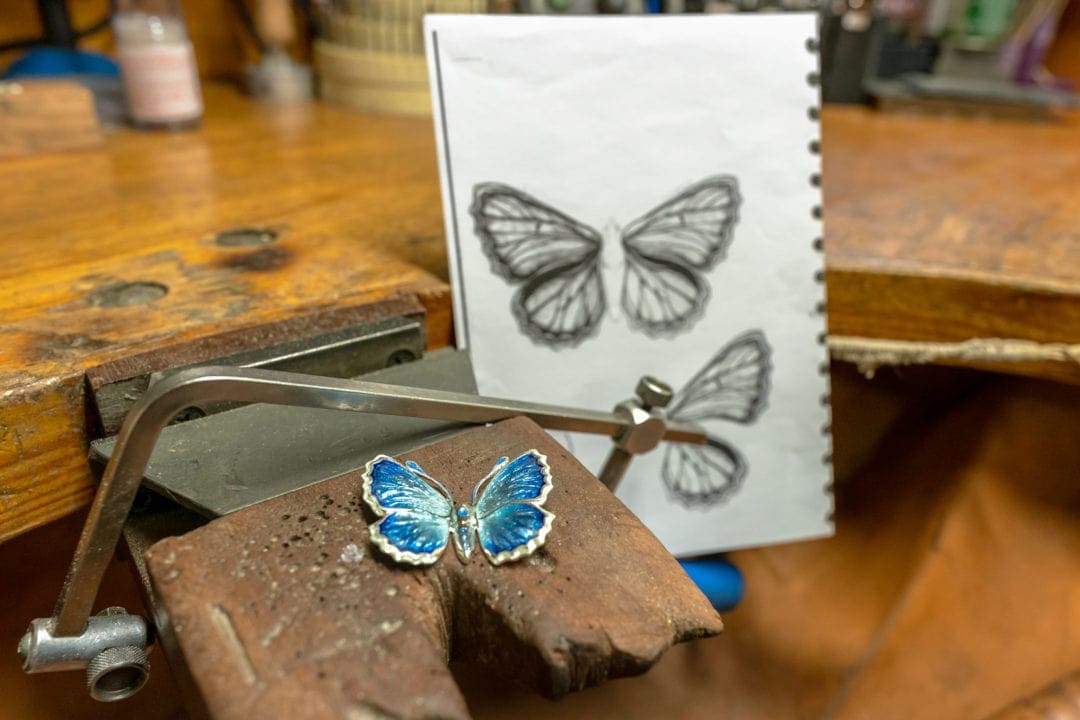
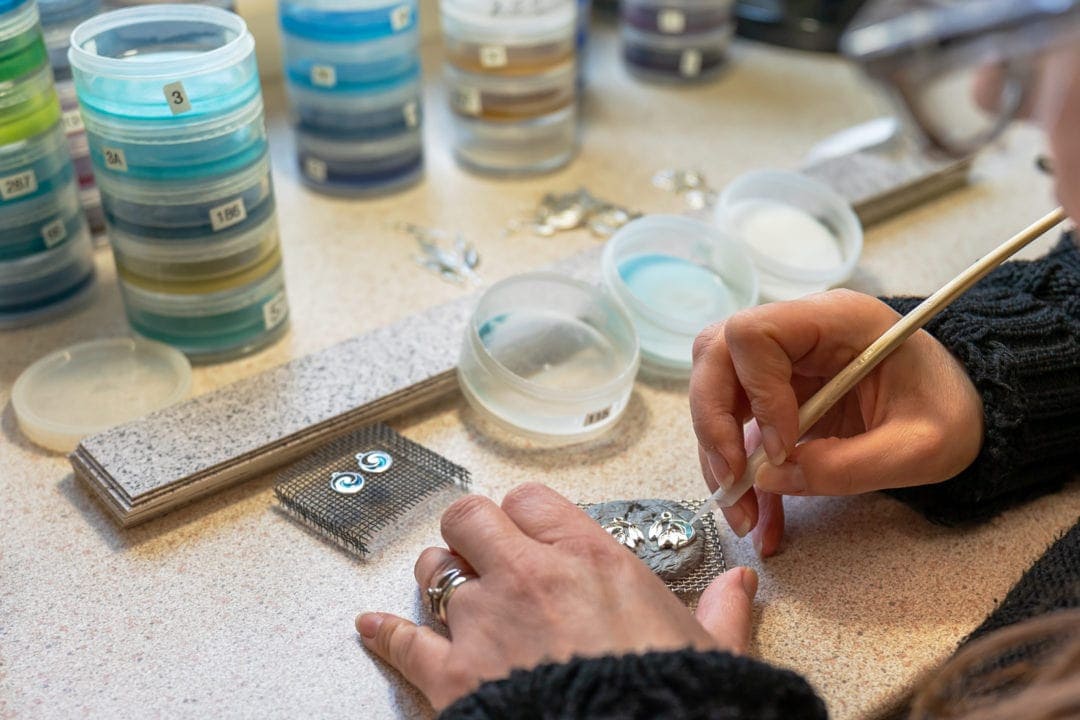
We were lucky to meet Sheila Fleet (we started chatting at the Stenness Standing Stones), and she invited us to tour the Kirk Gallery. If you are interested, you can see the whole process involved in her jewellery-making here.
You certainly can’t take any of Orkney’s Neolithic treasures home with you, but you can take a little reminder of Orkney as a handmade piece of jewellery.
If you plan to eat at the Kirk Gallery Cafe or even stop for a coffee, make a booking beforehand, as the cafe is extremely popular.
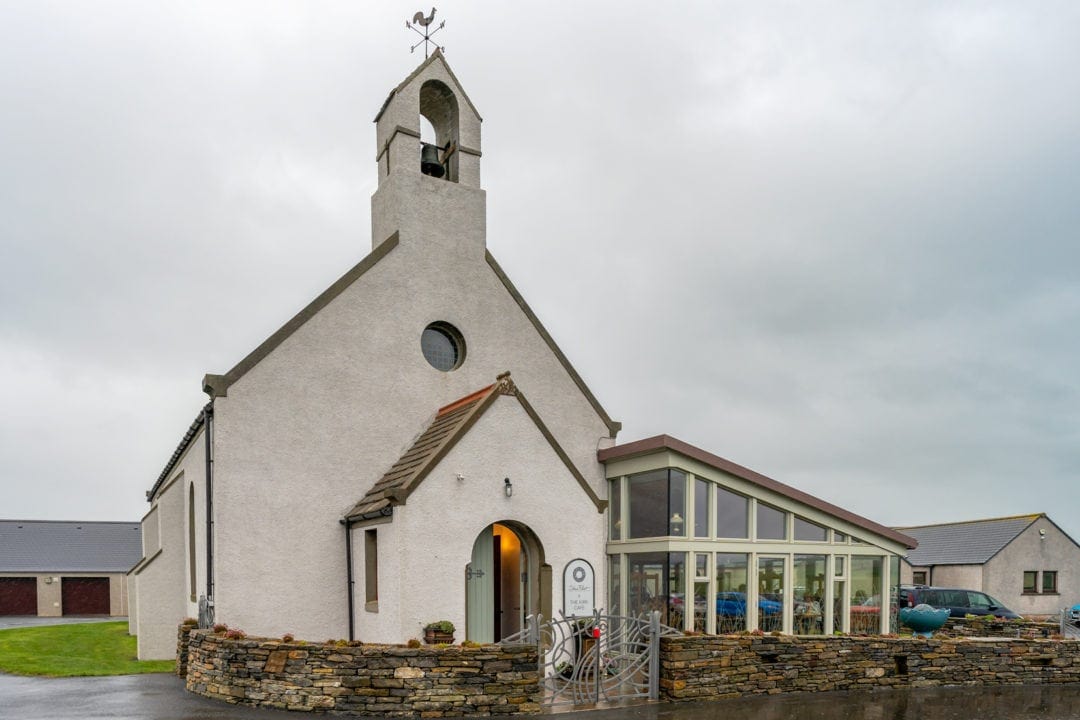
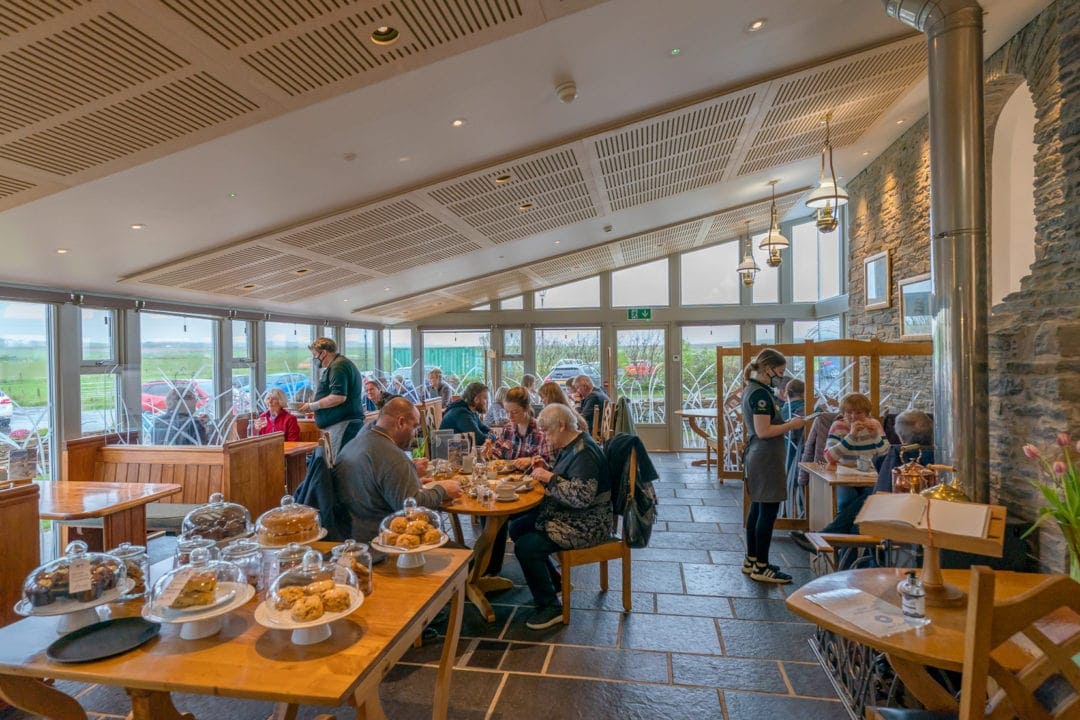
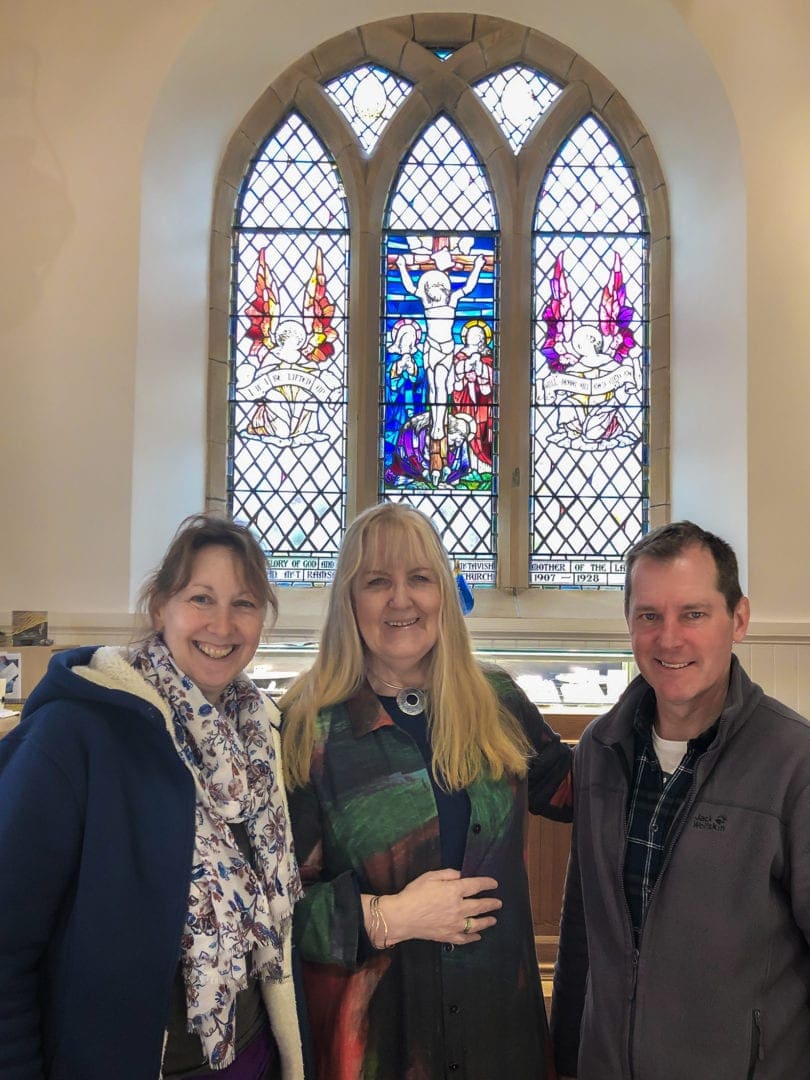
Orkney undoubtedly inspires creativity, and there is no shortage of Orcadian artisans and crafters on the island.
Jewellery, knitwear, furniture, tapestries, pottery, and art are all part of Creative Orkney. Pick up an Orkney Creative Trail Booklet at the Kirkwall iCentre (tourist office) or download a copy here.
20. Scapa Bay
In the past two World Wars, Orkney was home to thousands of service personnel, and Scapa Flow was a strategic Naval base.
Many naval disasters have occurred in the area, but at Scapa, you will find the HMS Royal Oak memorial. It was after the sinking of the Royal Oak by a German submarine in 1939, with the devastating loss of 835 lives, that Winston Churchill ordered the construction of the Churchill Barriers.
If you want to learn more, visit the new Scapa Flow Museum.
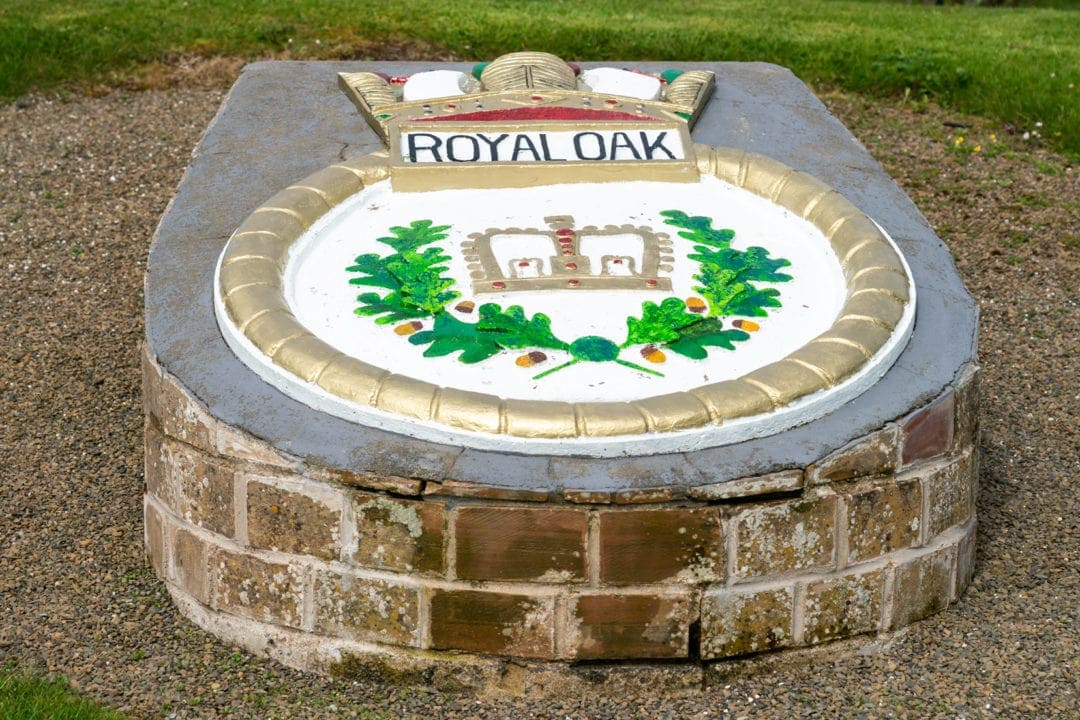
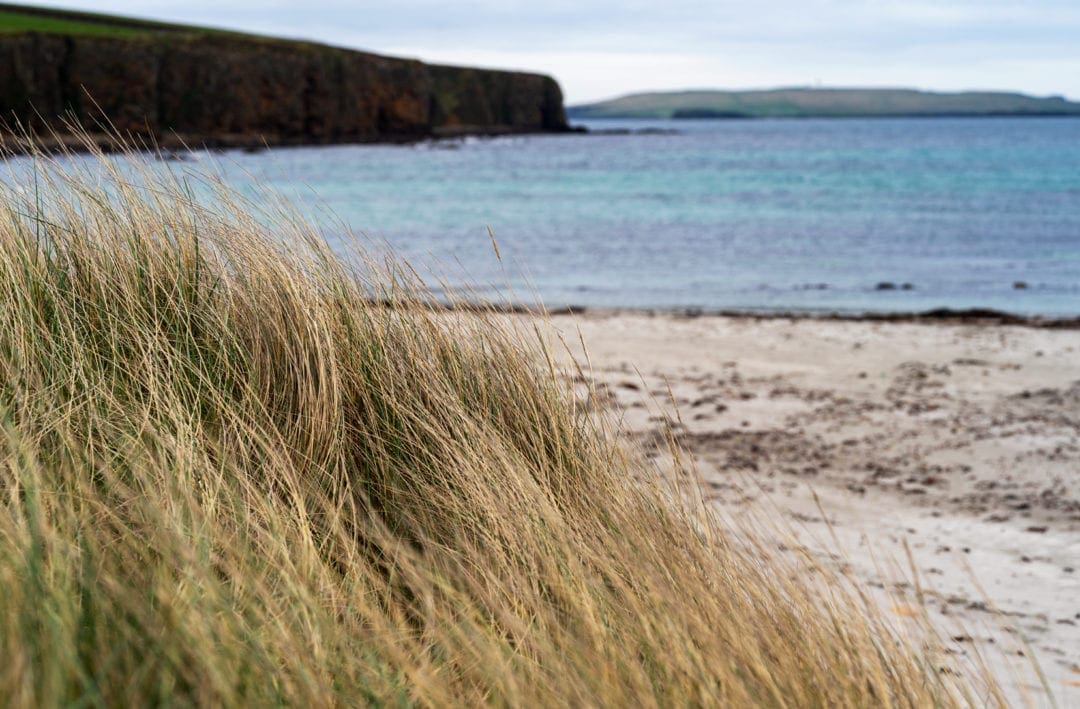
Driving in Orkney
Many of Orkney’s roads are single lanes, but there are usually loads of passing places for you to pull in to let others pass.
If you are unfamiliar with single-track roads, you must know how to use them properly.
These tips will help you to road trip around Orkney more safely.
- Drive on the left in Orkney.
- If you are driving slower than the traffic behind you, pull into a passing place to allow traffic to overtake you.
- Pull into the passing place on your left to let oncoming traffic pass.
- DO NOT pull into a passing place on your right. Stay on your left and wait opposite a passing place to allow traffic to pass.
- Don’t Park in a passing place.
- Look out for cyclists. In the UK, you need to give cyclists at least 1.5 metres of passing distance.
- Keep a lookout for sheep and wild animals, such as deer.
- It is illegal to use your mobile phone when driving.
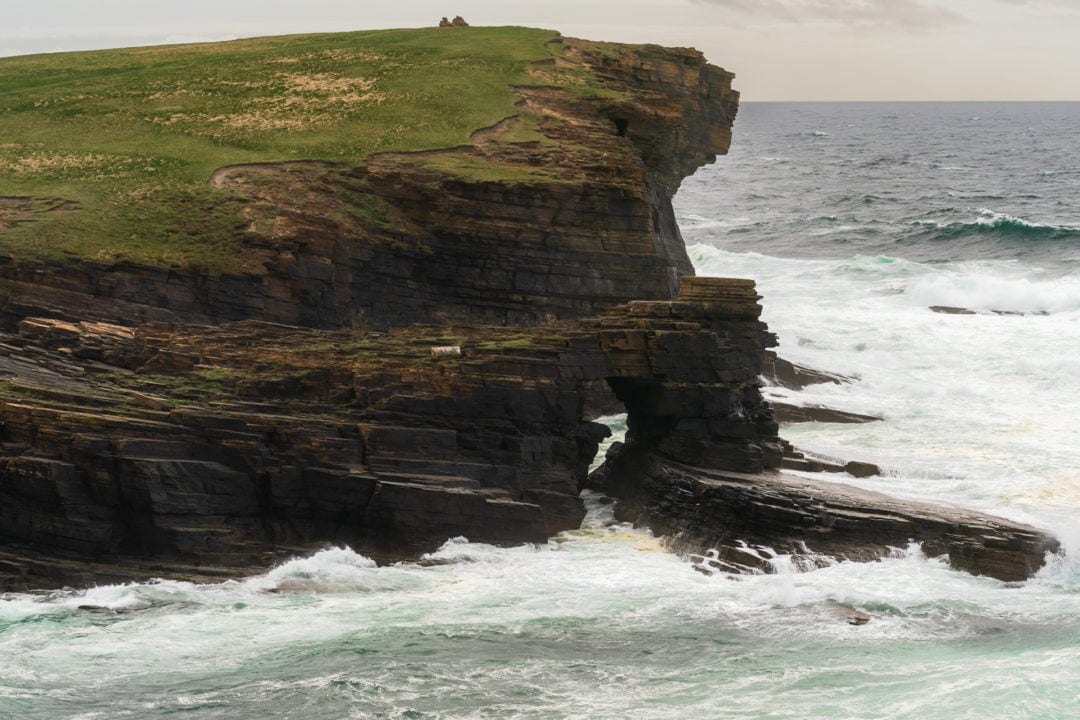
The Best Orkney Tours
1. Orkney Mainland Private Tour (from Kirkwall) – 7 Hours
If you want to relax and have a tour guide take you to all the main sights of Orkney, then book this highly-rated tour.
You will be picked up from your hotel or accommodation and visit the island’s top historical and natural sights.
This tour, with no hidden costs, includes visits to:
- Scapa Flow (ticket inc.)
- Unstan Chambered Cairn
- Standing Stones of Stenness
- Ring of Brodgar
- Skara Brae (ticket inc.)
- Skaill House (ticket inc)
- The Italian Chapel (ticket inc)
🚌 Book this 5-star reviewed Orkney Island tour here | ⏰ 7 Hours | ⭐️ 5/5 Star Check availability and read reviews here.
Getting To Orkney
Car Ferry to Orkney Mainland
There are three car ferry routes to Orkney.
- We took the Northlink car ferry from Scrabster (near Thurso) on Scotland’s north coast to Stromness on Orkney’s west coast. (See Map)
- Northlink also runs a ferry from Aberdeen to Kirkwall. Check times and prices at Northlink here.
- The third option is to take the Pentland ferry from Gill’s Bay, just west of John’O Groats, to St Margaret’s Hope, Orkney
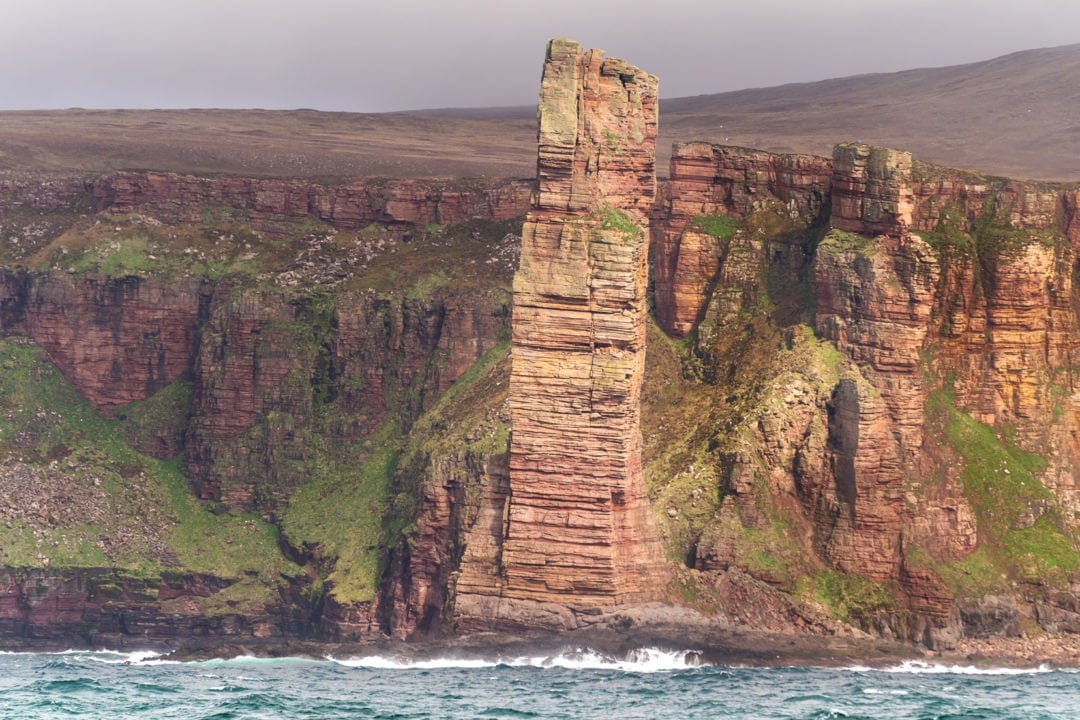
Flying to Orkney
If you are planning your road trip by hiring a car in Orkney, consider flying into Orkney.
Logan Air runs flights to Kirkwall, Orkney, from Aberdeen, Edinburgh, Glasgow and Inverness.
🚘 If you want to hire a car, we recommend DiscoverCars.
- They have a Price Match Guarantee.
- 4.5 Rating on Trustpilot
- Excellent Customer Service
- Free Cancellation
Accommodation In Orkney
While road-tripping around Orkney, we based ourselves in Kirkwall. This made it easy to travel to Orkney’s west and east mainland.
The place we stayed was also within walking distance of the town centre, and we would thoroughly recommend this Airbnb accommodation run by super hosts Ian and Fiona. We had everything we needed, as well as the use of a well-stocked breakfast bar.
🛏 Check out the Booking.com ⭐️ DEALS available in Kirkwall here
Orkney Road Trip Itinerary FAQS
1. What are the must-visit historical sites in Orkney?
Orkney is rich in history and offers numerous captivating sites. Don’t miss the UNESCO World Heritage Sites like Skara Brae, the Ring of Brodgar, and Maeshowe. These Neolithic marvels offer a glimpse into ancient civilizations and are a must-visit for history enthusiasts.
2. What outdoor activities can I enjoy in Orkney?
There are plenty of outdoor activities to enjoy in Orkney. Explore the dramatic Yesnaby coastal cliffs, take scenic hikes, and go birdwatching at the RSPB reserves. Additionally, you can take a boat tour to spot seals, dolphins, and other marine wildlife.
3. When is the best time to visit Orkney?
Orkney’s beauty changes with the seasons. The summer months (June to August) offer longer days, milder weather, and many tourists. However, shoulder seasons like spring (April to May) and autumn (September to October) offer fewer crowds and pleasant weather. The choice depends on your preference for weather and tourist activity.
4. What are some hidden gems and lesser-known attractions in Orkney?
While the popular sites are a must-see, Orkney also boasts hidden gems worth exploring. Explore the Brough of Birsay, a tidal island with historic ruins, and Binscarth Woods – especially in spring when it’s carpeted in bluebells.
5. Are the people friendly in Orkney?
We found the people in Orkney to be extremely friendly and more than happy to share all the places to visit on their island. There was a great sense of pride in their culture and, in fact, Orkney took the top spot as the happiest place to live in Scotland in October 2022.
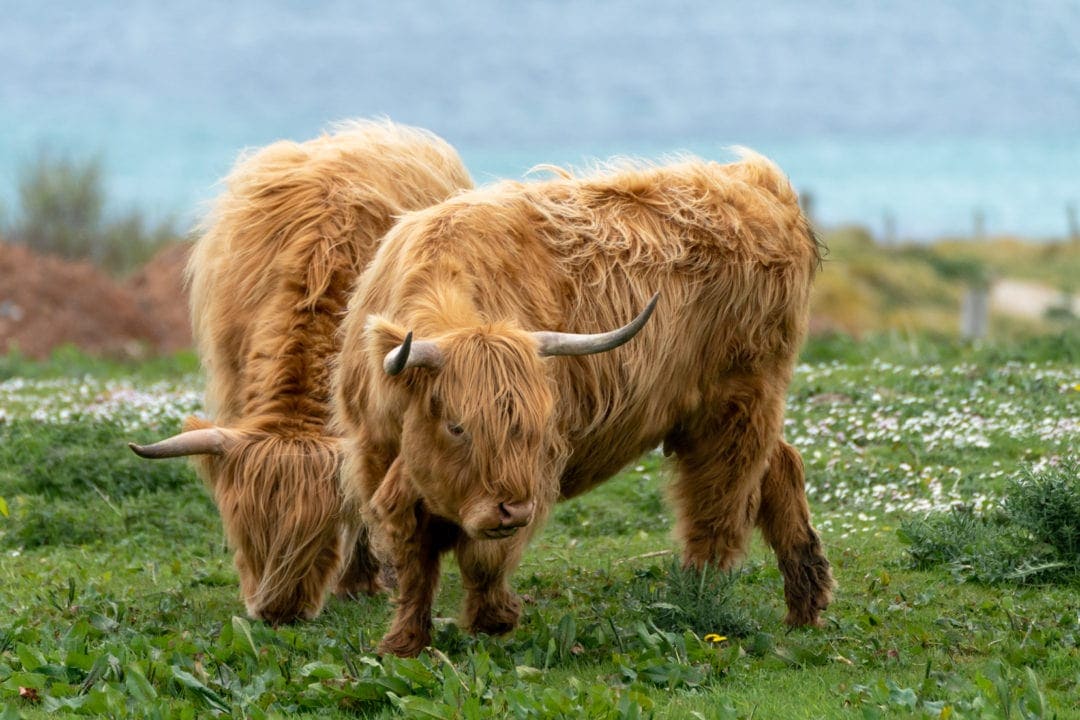
Orkney Road Trip Itinerary … That’s a Wrap
We’ve just given you a taste of what three days in Orkney can look like, but trust us, you could easily extend this adventure to a full week or more. The beauty and depth of Orkney’s landscapes are worth that extra time.
As avid photographers and walkers, we found ourselves drawn to return to several spots at different times of the day, each offering a new angle of Orkney’s stunning vistas.
There’s so much more to see and do, from cliff-top walks to deep dives into the local culture and history.
As photographers, we would have loved to revisit some of the locations at different times of the day. We also love walking and could easily have used up a few days walking along the clifftops if we had more time.
This itinerary covers a mix of natural beauty, historical sites, and personal discoveries, giving you a well-rounded glimpse of what Orkney has to offer.
We’d love for you to share your favourite Orkney memory in the comments below or drop us a line if you have any questions.
Enjoy your trip, happy planning and don’t forget to download our free Road Trip planner ⬇️

Pin and Save for Later
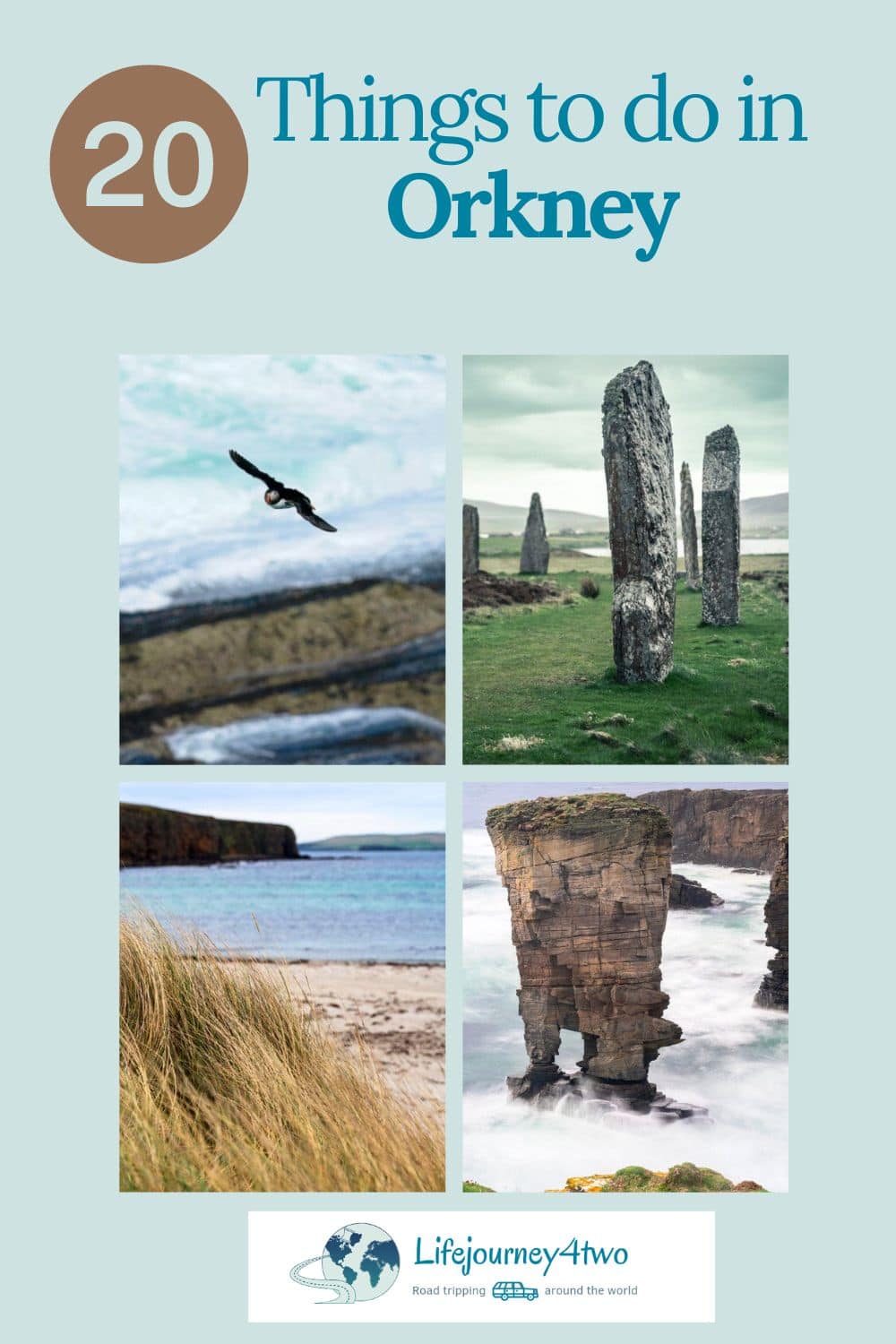
READ MORE
- Road Trip Around the Outer Hebrides, Isle of Lewis and Harris
- Scotland Destination Travel Guide
- The Best Castle Tours in Scotland
Planning Your Travels?
These are the travel resources we recommend and use when planning our trips.
- 🚘 Car Hire: We use DiscoverCars.com
- Motorhome/Campervan Rental: We highly recommend the Motorhome Republic
- 🪪 Order your International Driver’s Licence online here
- 🛏 Book Accommodation: We use Booking.com to find accommodation that suits our budget
- 🐶 Pet Sitting/Pet Sitters: Check Out TrustedHousesitters here (Use our Discount code: LIFEJOURNEY25 for 25% off. )
- Activities and Experiences: Get Your Guide and Viator
- Travel Insurance: Safetywing or World Nomads
- 🥾 Travel Gear and Accessories: Check out our top picks here — Lifejourney4two page on Amazon
For a more thorough list, visit our Travel Resources page here.

